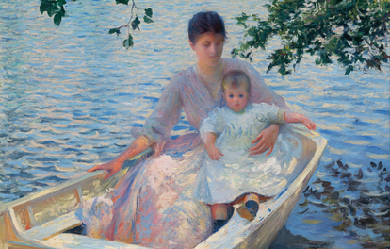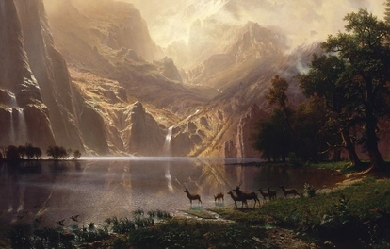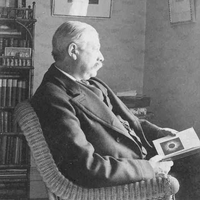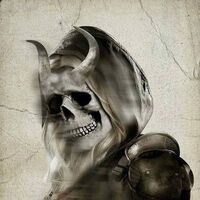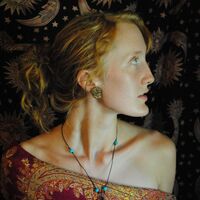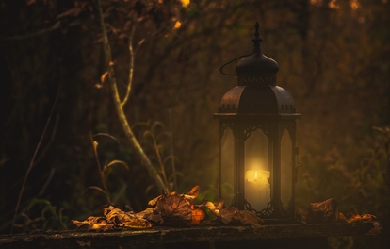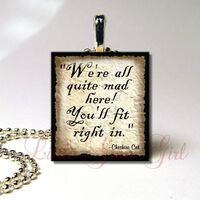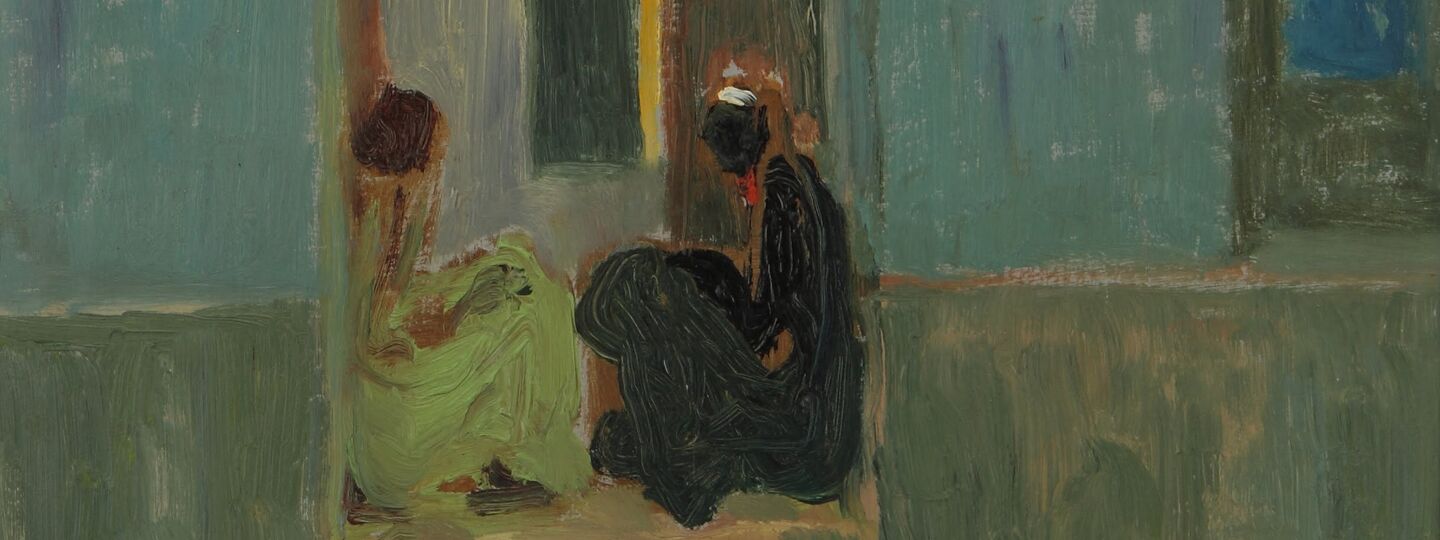
Info
Pedro Figari
1880 – 1938

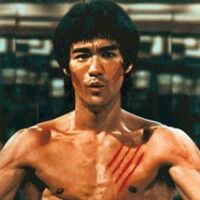
Bruce Jun Fan Lee was born in the hour of the Dragon, between 6 and 8 a.m., in the year of the Dragon on November 27, 1940 at the Jackson Street Hospital in San Francisco’s Chinatown. Today, a plaque in the hospital’s entry commemorates the place of his birth. Bruce’s birth, in the hour and the year of the Dragon, is a powerful symbol in Chinese astrology. It would be a strong omen of the powerful life that was to be lived by Bruce Lee and the explosive impact his life would have on countless others. Bruce was the fourth child born to Lee Hoi Chuen and his wife Grace Ho. He had two older sisters, Phoebe and Agnes, an older brother, Peter, and a younger brother, Robert. Lee Hoi Chuen was, by profession, a comedian in the Chinese opera and an actor in Cantonese films. At the time Bruce was born, Mr. and Mrs. Lee were on tour with the opera company in the United States. Thus, it was fortuitous for Bruce’s future that his birth took place in America, as he would return 18 years later to claim his birthright of American citizenship. Bruce’s parents gave him the name “Jun Fan.” Since it is Chinese custom to put the surname first, Bruce’s full name is written Lee Jun Fan. The true meaning of Jun Fan deserves an explanation as it, too, would foretell the journey of the newly born Lee son. Literally, JUN means “to arouse to the active state” or “to make prosperous.” It was a common middle name used by Hong Kong Chinese boys in those days, understandably because China and the Chinese people were very vulnerable at that time, and everyone, including Bruce’s parents, wanted the “sleeping lion of the East” to wake up. The FAN syllable refers to the Chinese name for San Francisco, but its true meaning is “fence of a garden” or “bordering subordinate countries of a big country.” During the period of the Ching Dynasty (1644-1911), many Chinese immigrated to Hawaii and San Francisco as laborers, and the implication became that the United States was FAN of the Great Ching Empire. Thus the true meaning of Bruce’s name--JUN FAN--was “to arouse and make FAN (the United States) prosperous.” The gut feeling of many Chinese at that time, who felt suppressed by and inferior to foreign powers, was that they wished to outshine the more superior countries and regain the Golden Age of China. Bruce’s parents wanted Bruce to have his name shine and shake the foreign countries, which he certainly succeeded in doing. The English name, BRUCE, was given to the baby boy by a nurse in the Jackson Street Hospital although he was never to use this name until he entered secondary school and began his study of the English language. The story goes that on the first day of English class, the students were asked to write down their English names, and Bruce, not knowing his name, copied the name of the student next to him. His family almost never used the name Bruce, especially in his growing up years when his nickname in the family was “SAI FON,” which literally means Little Peacock. This is a girl’s nickname, but in being applied to Bruce, it had a serious purpose. The first-born child of Mr. and Mrs. Lee had been a boy who did not survive infancy. Their belief was that if the gods did not favor the birth of a male child, the babe might be taken away. Thus, the name, Little Peacock, was used as a ruse to fool the gods into thinking that Bruce was a girl. It was a term of great affection within the family circle. At the age of three months, Lee Hoi Chuen, his wife Grace and baby Bruce returned to Hong Kong where Bruce would be raised until the age of 18. Probably because of the long ocean voyage and the change in climates, Bruce was not a strong child in his very early years, a condition that would change when he took up the study of gung fu at the age of 13. (Bruce always spelled his Chinese martial art as GUNG FU, which is the Cantonese pronunciation of the more commonly spelled Kung Fu, a Mandarin pronunciation.) Bruce’s most prominent memory of his early years was the occupation of Hong Kong by the Japanese during the World War II years (1941-1945). The residence of the Lee family was a flat at 218 Nathan Road in Kowloon directly across the street from the military encampment of the Japanese. Bruce’s mother often told the story of young Bruce, less than 5 years old, leaning precariously off the balcony of their home raising his fist to the Japanese Zeros circling above. Another nickname the family often applied to Bruce was “Mo Si Ting” which means “never sits still” and aptly described his personality. The Japanese occupation was Bruce’s first prescient memory, but Hong Kong had been a British Crown Colony since the late 1800’s. The English returned to power at the end of the war. It is not hard to see why young Bruce would have rebellious feelings toward foreign usurpation of his homeland. In his teenage years Bruce was exposed to the common practice of unfriendly taunting by English school boys who appeared to feel superior to the Chinese. It is not surprising that Bruce and his friends retaliated by returning the taunts and sometimes getting into fights with the English boys. This atmosphere laid the background for Bruce to begin his study of martial arts. At the age of 13, Bruce was introduced to Master Yip Man, a teacher of the Wing Chun style of gung fu. For five years Bruce studied diligently and became very proficient. He greatly revered Yip Man as a master teacher and wise man and frequently visited with him in later years. When he first took up gung fu, he used his new skills to pummel his adversaries, but it did not take long for Bruce to learn that the real value of martial arts training is that the skills of physical combat instill confidence to the point that one does not feel the constant need to defend one’s honor through fighting. In high school, Bruce, now no longer a weak child, was beginning to hone his body through hard training. One of his accomplishments was winning an interschool Boxing Championship against an English student in which the Marquis of Queensbury rules were followed and no kicking was allowed. Given the graceful movements, which would later be spectacularly displayed in his films, it is no surprise that Bruce was also a terrific dancer, and in 1958 he won the Hong Kong Cha Cha Championship. He studied dancing as assiduously as he did gung fu, keeping a notebook in which he had noted 108 different cha cha steps. It is easy to see that Bruce possessed the traits of self-discipline and hard work which would later hold him in good stead, even though at this stage he was not among the best academic students in the class. In addition to his studies, gung fu and dancing, Bruce had another side interest during his school years. He was a child actor under the tutelage of his father who must have known from an early age that Bruce had a streak of showmanship. Bruce’s very first role was as a babe in arms as he was carried onto the stage. By the time he was 18, he had appeared in 20 films. In those days movie making was not particularly glamorous or remunerative in Hong Kong, but Bruce loved acting. His mother often told stories of how Bruce was impossible to wake up to go to school, but just a tap on the shoulder at midnight would rouse him from his bed to go to the film studio. Movies were most often made at night in Hong Kong in order to minimize the sounds of the city. (See Filmography) At the age of 18, Bruce was looking for new vistas in his life, as were his parents who were discouraged that Bruce had not made more progress academically. It was common practice for high school graduates to go overseas to attend colleges, but that required excellent grades. Bruce’s brother and sister had come to the United States on student visas for their higher education. Although Bruce had not formally graduated from high school, and was more interested in gung fu, dancing and acting, his family decided that it was time for him to return to the land of his birth and find his future there. In April of 1959, with $100 in his pocket, Bruce boarded a steamship in the American Presidents Line and began his voyage to San Francisco. His passage was in the lower decks of the ship, but it didn’t take long for Bruce to be invited up to the first class accommodations to teach the passengers the cha cha. Landing in San Francisco, Bruce was armed with the knowledge that his dancing abilities might provide him a living, so his first job was as a dance instructor. One of his first students was Bob Lee, brother of James Y. Lee, who would become Bruce’s great friend, colleague in the martial arts, and eventually partner and Assistant Instructor of the Oakland Jun Fan Gung Fu Institute. Bruce did not stay long in San Francisco, but traveled to Seattle where a family friend, Ruby Chow, had a restaurant and had promised Bruce a job and living quarters above the restaurant. By now Bruce had left his acting and dancing passions behind and was intent on furthering his education. He enrolled at Edison Technical School where he fulfilled the requirements for the equivalent of high school graduation and then enrolled at the University of Washington. Typical of his personality traits, he attacked learning colloquial English as he had his martial arts training. Not content to speak like a foreigner, he applied himself to learning idiosyncrasies of speech. His library contained numerous books, underlined and dog-eared on common English idiomatic phrases. Although he never quite lost the hint of an English accent when speaking, his ability to turn a phrase or “be cool” was amazing for one who did not speak a word of the language until the age of 12. Bruce’s written English skills exceeded his spoken language abilities at first because he had been well tutored in the King’s proper English prose in Hong Kong. When his wife-to-be met him at the University of Washington, he easily edited her English papers for correct grammar and syntax. At the university, Bruce majored in philosophy. His passion for gung fu inspired a desire to delve into the philosophical underpinnings of the arts. Many of his written essays during those years would relate philosophical principles to certain martial arts techniques. For instance, he wrote often about the principles of yin and yang and how they could translate into hard and soft physical movements. In this way he was completing his education as a true martial artist in the time-honored Chinese sense of one whose knowledge encompasses the physical, mental and spiritual aspects of the arts. In the three years that Bruce studied at the university, he supported himself by teaching gung fu, having by this time given up working in the restaurant, stuffing newspapers or various other odd jobs. He and a few of his new friends would meet in parking lots, garages or any open space and play around with gung fu techniques. In the late ‘50’s and early ‘60’s, “gung fu” was an unknown term; in fact, the only physical art that might be listed in the yellow pages was Judo. Even the name “karate” was not a familiar term. The small group of friends was intrigued by this art called gung fu. One of the first students in this group was Jesse Glover who continues to teach some of Bruce’s early techniques to this day. It was during this period that Bruce and Taky Kimura became friends. Not only would Taky become Bruce’s gung fu student and the first Assistant Instructor he ever had, but the friendship forged between the two men was a source of love and strength for both of them. Taky Kimura has continued to be Bruce’s staunch supporter, devoting endless hours to preserving his art and philosophy throughout the 30 years since Bruce’s passing. The small circle of friends that Bruce had made encouraged him to open a real school of gung fu and charge a nominal sum for teaching in order to support himself while attending school. Renting a small basement room with a half door entry from 8th Street in Seattle’s Chinatown, Bruce decided to call his school the Jun Fan Gung Fu Institute. In 1963, having established a dedicated group of students and having given numerous demonstrations at the university, Bruce thought he might attract more students by opening a larger school at 4750 University Way where he also lived in a small room in the back of the kwoon. One of his students in 1963 was a freshman at the University of Washington, Linda Emery. Linda knew who Bruce was from his guest lectures in Chinese philosophy at Garfield High School, and in the summer after graduating, at the urging of her Chinese girlfriend, SueAnn Kay, Linda started taking gung fu lessons. It wasn’t long before the instructor became more interesting than the lessons. Bruce and Linda were married in 1964. By this time, Bruce had decided to make a career out of teaching gung fu. His plan involved opening a number of schools around the country and training assistant instructors to teach in his absence. Leaving his Seattle school in the hands of Taky Kimura, Bruce and Linda moved to Oakland where Bruce opened his second school with James Lee. The two men had formed a friendship over the years with each traveling frequently between Seattle and Oakland. James was a gung fu man from way back, but when he saw Bruce’s stuff he was so impressed that he wanted to join with him in starting a school. Thus the second branch of the Jun Fan Gung Fu Institute was founded. Having now been in the United States for five years, Bruce had left behind any thought of acting as a career, and devoted himself completely to his choice of martial arts as a profession. Up to this time Bruce’s gung fu consisted mostly of wing chun techniques and theory he had learned from Yip Man. Gradually though, because of his burgeoning interest in the philosophy of martial arts and his desire for self improvement, he was expanding his repertoire. A particular incident accelerated his process of self-exploration. In 1964 Bruce was challenged by some gung fu men from San Francisco who objected to his teaching of non-Chinese students. Bruce accepted the challenge and the men arrived at the kwoon in Oakland on the appointed day for the face off. The terms were that if Bruce were defeated he would stop teaching the non Chinese. It was a short fight with the gung fu man from The City giving up when Bruce had him pinned to the floor after about three minutes. The significance of this fight was that Bruce was extremely disappointed in his own performance. Even though he had won, he was winded and discouraged about his inability to put the man away in under three minutes. This marked a turning point for Bruce in his exploration of his martial art and the enhancement of his physical fitness. Thus began the evolution of Jeet Kune Do. Just as Bruce was cementing his plans to expand his martial arts schools, fate stepped in to move his life in another direction. In the preceding years Bruce had made the acquaintance of Ed Parker, widely regarded as the father of American Kenpo. In August of 1964, Ed invited Bruce to Long Beach, CA to give a demonstration at his First International Karate Tournament. Bruce’s exhibition was spectacular. He used Taky as his partner and demonstrated his blindfolded chi sao techniques. At one point he used a member of the audience to show the power of his one-inch punch. Such was Bruce’s charisma that he spoke conversationally, injecting humor into his comments while at the same time emphatically demonstrating his power, precision and speed. A member of the audience was Jay Sebring, a well-known hair stylist to the stars. As fate would have it, the following week, Jay was styling the hair of William Dozier, an established producer. Mr. Dozier mentioned to Jay that he was looking for an actor to play the part of Charlie Chan’s son in a series to be entitled, “Number One Son.” Jay told the producer about having seen this spectacular young Chinese man giving a gung fu demonstration just a few nights before. Mr. Dozier obtained a copy of the film that was taken at Ed Parker’s tournament. The next week he called Bruce at home in Oakland and invited him to come to Los Angeles for a screen test. Bruce’s screen test was impressive, but in the meantime plans for “Number One Son” had been scuttled. Mr. Dozier was now immersed in the production of the “Batman” TV series, but still he wanted to hang onto Bruce. The plan was that if Batman was successful for more than one season, then Dozier wanted to capitalize on the popularity of another comic book character, “The Green Hornet” with Bruce playing the part of Kato. To keep Bruce from signing with someone else, Mr. Dozier paid him an $1,800 option for one year. About this time things were changing in Bruce’s personal life as well. His own number one son, Brandon Bruce Lee, was born February 1, 1965. One week later Bruce’s father, Lee Hoi Chuen, died in Hong Kong. Bruce was pleased that his father had known about the birth of the first grandchild in the Lee family. Given these events and the arrival of the lump sum option money, Bruce decided it was time to make a trip to Hong Kong to visit his mother and introduce the family to both Linda and Brandon. They stayed in the family flat on Nathan Road for four months. While there Bruce was able to “play gung fu” with Master Yip Man and the students of the wing chun school. Upon leaving Hong Kong, Bruce and his family traveled to Seattle where they stayed with Linda’s family for another four months. During this time Bruce spent a great deal of time with Taky and the students at the Seattle school. After Seattle, the family moved back to James Lee’s house in Oakland for several months before making the move to Los Angeles. In Los Angeles, he got better acquainted with Dan Inosanto whom he had known through Ed Parker. It was not long before Bruce opened his third gung fu school with Dan as his assistant instructor During this entire year of traveling and working closely with his best gung fu colleagues, Bruce was going through a period of intense self-exploration. Bruce was always a goal setter. However, he was never obstinate about his goals and if the wind changed, he could steer his life on a different course. He was in a period of transition at this time, deciding whether to make acting his career or continue on the path of opening nationwide schools of gung fu. His decision was to focus on acting and see if he could turn it into a productive career. He often said his passion was pursuit of the martial arts, but his career choice was filmmaking. The chief reason that Bruce turned his attention to acting was that he had lost interest in spreading his way of martial arts in a wide scale manner. He had begun to see that if his schools became more numerous, he would lose control of the quality of the teaching. Bruce loved to teach gung fu, and he loved his students. Countless hours were spent in his backyard or in the kwoon, one on one with students. They were like members of the family. His love for his martial arts was not something he wanted to turn into a business. In 1966, production started on “The Green Hornet.” The filming lasted for six months, the series for one season, and that was the end of it. Bruce’s take home pay was $313 a week, which seemed like a lot of money at the time. When they first started filming, the cameras were not able to record the fight scenes clearly because of Bruce’s speed. They asked him to slow down to capture the action. Bruce’s gung fu moves thrilled audiences, and the series became a sought-after collector item in later years. Bruce maintained a friendship with Van Williams who played the part of Britt Reid. The years between 1967 and 1971 were lean years for the Lee family. Bruce worked hard at furthering his acting career and did get some roles in a few TV series and films. (See Filmography) To support the family, Bruce taught private lessons in Jeet Kune Do, often to people in the entertainment industry. Some of his clients included Steve McQueen, James Coburn, Stirling Silliphant, Sy Weintraub, Ted Ashley, Joe Hyams, James Garner and others. A great blessing was the arrival of a daughter, Shannon Emery Lee, on April 19, 1969. She brought great joy into the Lee household and soon had her daddy around her little finger. During this time Bruce continued the process he had started in Oakland in 1964, the evolution of his way of martial arts, which he called Jeet Kune Do, “The Way of The Intercepting Fist.” He read and wrote extensively his thoughts about physical combat, the psychology of fighting, the philosophical roots of martial arts, and about motivation, self-actualization and liberation of the individual. Thanks to this period in his life, which was at times frustrating, we know more about the mind of Bruce Lee through his writings. Bruce was devoted to physical culture and trained devotedly. In addition to actual sparring with his students, he believed in strenuous aerobic workouts and weight training. His abdominal and forearm workouts were particularly intense. There was rarely a time when Bruce was doing nothing—in fact, he was often seen reading a book, doing forearm curls and watching a boxing film at the same time. He also paid strict attention to his food consumption and took vitamins and Chinese herbs at times. It was actually his zealousness that led to an injury that was to become a chronic source of pain for the rest of his life. On a day in 1970, without warming up, something he always did, Bruce picked up a 125-pound barbell and did a “good morning” exercise. That consists of resting the barbell on one’s shoulders and bending straight over at the waist. After much pain and many tests, it was determined that he had sustained an injury to the fourth sacral nerve. He was ordered to complete bed rest and told that undoubtedly he would never do gung fu again. For the next six months, Bruce stayed in bed. It was an extremely frustrating, depressing and painful time, and a time to redefine goals. It was also during this time that he did a great deal of the writing that has been preserved. After several months, Bruce instituted his own recovery program and began walking, gingerly at first, and gradually built up his strength. He was determined that he would do his beloved gung fu again. As can be seen by his later films, he did recover full use of his body, but he constantly had to take measures like icing, massage and rest to take care of his back. Bruce was always imagining story ideas. One of the projects he had been working on was the idea of a television series set in the Old West, featuring an Eastern monk who roamed the countryside solving problems. He pitched the idea at Warner Bros. and it was enthusiastically received. The producers talked at great length to Bruce about the proposed series always with the intent that Bruce would play the role of the Eastern wise man. In the end, the role was not offered to Bruce; instead it went to David Carradine. The series was “Kung Fu.” The studio claimed that a Chinese man was not a bankable star at that time. Hugely disappointed, Bruce sought other ways to break down the studio doors. Along with two of his students, Stirling Silliphant, the famed writer, and actor, James Coburn, Bruce collaborated on a script for which he wrote the original story line. The three of them met weekly to refine the script. It was to be called “The Silent Flute.” Again, Warner Bros. was interested and sent the three to India to look for locations. Unfortunately the right locations could not be found, the studio backed off, and the project was put on the back burner. Thwarted again in his effort to make a go of his acting career, Bruce devised a new approach to his goal. In 1970, when Bruce was getting his strength back from his back injury, he took a trip to Hong Kong with son Brandon, age five. He was surprised when he was greeted as “Kato,” the local boy who had been on American TV. He was asked to appear on TV talk shows. He was not aware that Hong Kong film producers were viewing him with interest. In 1971, about the time that “The Silent Flute” failed to materialize, Hong Kong producer Raymond Chow contacted Bruce to interest him in doing two films for Golden Harvest. Bruce decided to do it, reasoning that if he couldn’t enter the front door of the American studios, he would go to Hong Kong, establish himself there and come back in through the side door. In the summer of 1971, Bruce left Los Angeles to fly to Hong Kong, then on to Thailand for the making of “The Big Boss,” later called “Fists of Fury.” Between Hong Kong and Thailand, producer Run Run Shaw attempted to intercede and woo Bruce away from Golden Harvest. But Bruce had signed a deal so he stayed with Raymond Chow. Bruce’s family did not accompany him on this trip because the village where the film was made was not suitable for small children. It was also felt that if this film was not a hit, Bruce might be back in L.A. sooner than expected. Although the working conditions were difficult, and the production quality substandard to what Bruce was accustomed, “The Big Boss” was a huge success. The premier took place at midnight, as was Hong Kong custom. Chinese audiences are infamous for expressing their emotions during films—both positive and negative. The entire cast and production team were very nervous, no one more so than Bruce. At the end of the showing, the entire audience was silent for a moment, then erupted in cheers and hailed their new hero who was viewing from the back of the theater. In September of 1971, with filming set to commence on the second of the contractual films, Bruce moved his family over to Hong Kong and prepared to sell their Los Angeles home. “Fist of Fury,” also called “Chinese Connection” was an even bigger success than the first film breaking all-time box office records. Now that Bruce had completed his contract with Golden Harvest, and had become a bankable commodity, he could begin to have more input into the quality of his films. For the third film, he formed a partnership with Raymond Chow, called Concord Productions. Not only did Bruce write “The Way of the Dragon,” also called “Return of the Dragon,” but he directed and produced it as well. Once again, the film broke records and now, Hollywood was listening. In the fall of 1972, Bruce began filming “The Game of Death,” a story he once again envisioned. The filming was interrupted by the culmination of a deal with Warner Bros. to make the first ever Hong Kong-American co-production. The deal was facilitated mainly by Bruce’s personal relationship with Warner Bros. president, Ted Ashley and by Bruce’s successes in Hong Kong. It was an exciting moment and a turning point in Hong Kong’s film industry. “The Game of Death” was put on hold to make way for the filming of “Enter the Dragon.” Filming “Enter the Dragon” was not an easy undertaking. The American cast and crew and their Chinese counterparts experienced language problems and production difficulties. It was a stressful time for Bruce too as he wanted the film to be especially good and well accepted by Western audiences. “Enter the Dragon” was due to premier at Hollywood’s Chinese theater in August of 1973. Unfortunately, Bruce would not live to see the opening of his film, nor would he experience the accumulated success of more than thirty years of all his films’ popularity. On July 20, 1973, Bruce had a minor headache. He was offered a prescription painkiller called Equagesic. After taking the pill, he went to lie down and lapsed into a coma. He was unable to be revived. Extensive forensic pathology was done to determine the cause of his death, which was not immediately apparent. A nine-day coroner’s inquest was held with testimony given by renowned pathologists flown in from around the world. The determination was that Bruce had a hypersensitive reaction to an ingredient in the pain medication that caused a swelling of the fluid on the brain, resulting in a coma and death. The world lost a brilliant star and an evolved human being that day. His spirit remains an inspiration to untold numbers of people around the world. Copyright @ 2006 Bruce Lee Foundation References Bruce Lee Foundation - http://bruceleefoundation.com/index.cfm/pid/10585

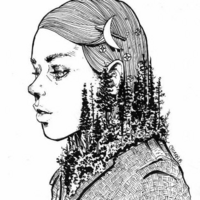
Everything in life is a matter of perspective. What we think and feel are all temporary and fading shreds that fluctuate based on our perception. Poetry is the art of eloquently and passionately jotting down our attempts at understanding what we perceive and how it evolves. I can't say that everything I offer here is pleasant truthfully most of it is probably not. I write to release it helps me cope with what is going on around me. These are the peaks of my ever changing thoughts, feelings and experiences. I hope you are able to find something useful in them.
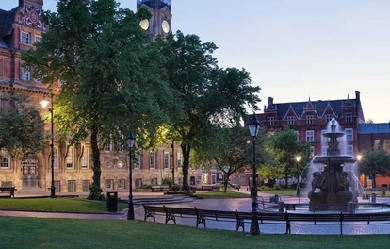
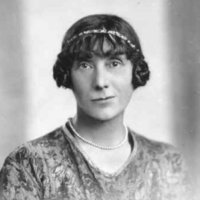
Jessie Pope (18 March 1868– 14 December 1941) was an English poet, writer and journalist, who remains best known for her patriotic motivational poems published during World War I. Wilfred Owen directed his 1917 poem Dulce et Decorum Est at Pope, whose literary reputation has faded into relative obscurity as those of war poets such as Owen and Siegfried Sassoon have grown. Early career Born in Leicester, she was educated at North London Collegiate School. She was a regular contributor to Punch, The Daily Mail and The Daily Express, also writing for Vanity Fair, Pall Mall Magazine and the Windsor. Prose editor A lesser-known literary contribution was Pope’s discovery of Robert Tressell’s novel The Ragged Trousered Philanthropists, when his daughter mentioned the manuscript to her after his death. Pope recommended it to her publisher, who commissioned her to abridge it before publication. This, a partial bowdlerisation, moulded it to a standard working-class tragedy while greatly downgrading its socialist political content. Verse Other works include Paper Pellets (1907), an anthology of humorous verse. She also wrote verses for children’s books, such as The Cat Scouts (Blackie, 1912) and the following eulogy to her friend, Bertram Fletcher Robinson (published in the Daily Express on Saturday 26 January 1907): Good Bye, kind heart; our benisons preceding, Shall shield your passing to the other side. The praise of your friends shall do your pleading In love and gratitude and tender pride. To you gay humorist and polished writer, We will not speak of tears or startled pain. You made our London merrier and brighter, God bless you, then, until we meet again! War poetry Pope’s war poetry was originally published in The Daily Mail; it encouraged enlistment and handed a white feather to youths who would not join the colours. Nowadays, this poetry is considered to be jingoistic, consisting of simple rhythms and rhyme schemes, with extensive use of rhetorical questions to persuade (and sometimes pressure) young men to join the war. This extract from Who’s for the Game? is typical in style: Who’s for the game, the biggest that’s played, The red crashing game of a fight? Who’ll grip and tackle the job unafraid? And who thinks he’d rather sit tight? Other poems, such as The Call (1915)– “Who’s for the trench– Are you, my laddie?”– expressed similar sentiments. Pope was widely published during the war, apart from newspaper publication producing three volumes: Jessie Pope’s War Poems (1915), More War Poems (1915) and Simple Rhymes for Stirring Times (1916). Criticism Her treatment of the subject is markedly in stark contrast to the anti-war stance of soldier poets such as Owen and Siegfried Sassoon. Many of these men found her work distasteful, Owen in particular. His poem Dulce et Decorum Est was a direct response to her writing, originally dedicated “To Jessie Pope etc.”. A later draft amended this as “To a certain Poetess”, later being removed completely to turn the poem into a general reproach on anyone sympathetic to the war. Pope is prominently remembered first for her pro-war poetry, but also as a representative of homefront female propagandists such as Mrs Humphry Ward, May Wedderburn Cannan, Emma Orczy, and entertainers such as Vesta Tilley. In particular, the poem “War Girls”, similar in structure to her pro-war poetry, states how "No longer caged and penned up/They’re going to keep their end up/Until the khaki soldier boys come marching back". Though largely unknown at the time, the War poets like Nichols, Sassoon and Owen, as well as later writers such as Edmund Blunden, Robert Graves, and Richard Aldington, have come to define the experience of the First World War. Reappraisal Pope’s work is today often presented in schools and anthologies as a counterpoint to the work of the War Poets, a comparison by which her pro-war work suffers both technically and politically. Some writers have attempted a partial re-appraisal of her work as an early pioneer of English women in the workforce, while still critical of both the content and artistic merit of her war poetry. Reminded that Pope was primarily a humourist and writer of light verse, her success in publishing and journalism during the pre-war era, when she was described as the “foremost woman humourist” of her day has been overshadowed by her propagandistic war poems. Her verse has been mined for sympathetic portrayals of the poor and powerless, of women urged to be strong and self-reliant. Her portrayal of the Suffragettes in a pair of counterpointed 1909 poems makes a case both for and against their actions. Later life After the war, Pope continued to rewrite, penning a short novel, poems—many of which continued to reflect upon the war and its aftermath—and books for children. She married a widower bank manager in 1929, when she was 61, and moved from London to Fritton, near Great Yarmouth. She died on 14 December 1941 in Devon.

Most of what I write or enjoy reading has a significant amount of word relationships and phrasing that evoke imagery. Whether it's prose on people or life or metered rhyming verses I find that the way they read should have not just metaphor, word plays, and all other typical "poetic" usage, but should also have a visual quality that is some what like painting or illustration. I'm not saying I do this well in my own writing but I'm merely stating what I am going for as an artist. Like anything creative, the more of yourself you put into it and dedicate time to, the better it ultimately becomes. The collection of poems that are subtitled Nest in the Black Tree is a series of concept pieces. The setting is in the Bad Lands (purgatory). When a "Soul" has been born it belongs to the Watch Tower(God). Once one is created the Clock Maker creates a "vessel"(a human body). The Time Keeper starts the Heart-Break-Timer and this would be the life one is given from begining, life, old age, and the end. When the timer runs out the soul must be delivered back to the Watch Tower, but to do so is tasked by the Sprinter(an angel). The Sprinter takes the soul across the Bad Lands running as God's Speed. The Bad Lands are filled by an evil race known as the Wretched. The Wretches are ruled by the war machine Brontus Singlairn. Brontus wants the souls the Sprinters carry to turn them from a life into a Wretch(demon). The Poems are free-verse prose left open to to the imagination of the reader and to the foundation of the story. "Space, Universe, Stars" are part of the idea of creating a setting, being that this is a place of the in "between", and also is a way to give a little more poetic depth. One day I would hope to get the "The Nest and the Black Tree" published. This is where you, the reader, comes in to give me comments and ideas for this evolving story. —Nicholas Gress —Saidwhattha
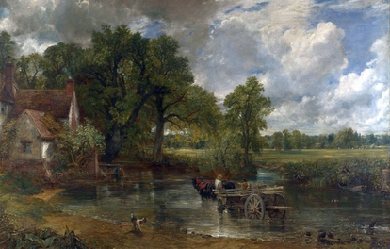
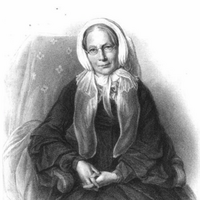
Ann Taylor (30 January 1782– 20 December 1866) was an English poet and literary critic. In her youth she was a writer of verse for children, for which she achieved long-lasting popularity. In the years immediately preceding her marriage, she became an astringent literary critic of growing reputation. She is, however, best remembered as the elder sister and collaborator of Jane Taylor. The literary family The Taylor sisters were part of an extensive literary family, daughters of Isaac Taylor of Ongar. Ann was born in Islington and lived with her family at first in London and later in Lavenham in Suffolk, in Colchester and, briefly, in Ongar. The sisters’ father, Isaac Taylor, was, like his own father, an engraver. He later became an educational pioneer and Independent minister and wrote a number of instructional books for the young. Their mother, Mrs (Ann Martin) Taylor (1757–1830) wrote seven works of moral and religious advice– in many respects liberal for their time– two of them fictionalized. Ann and Jane’s brothers, Isaac and Jefferys, also wrote, the former being a theologian, but also the inventor of a patent beer tap. The elder brother Charles Taylor edited The Literary Panorama, for which he wrote on topics from art to politics, and produced, anonymously, a massive annotated translation of Augustin Calmet’s Dictionary of the Bible. His younger brother Josiah was a publisher, chiefly of works on architecture and design. Authorship The sisters and their authorship of various works have often been confused, usually to Jane’s advantage. This is in part because their early works for children were published together and without attribution, but also because Jane, by dying young at the height of her powers, unwittingly attracted early posthumous eulogies, including what is almost a hagiography by her brother Isaac, and much of Ann’s work came to be ascribed to Jane, a borrowing which, Ann ruefully remarked, she could ill afford and which Jane certainly did not require. It is true that Jane achieved much more than Ann as a writer of poetry for an adult readership– though Ann’s poem “The Maniac’s Song”, published in the Associate Minstrels (1810), was probably the finest short poem by either sister, and it has even been postulated that it was an inspiration for Keats’s La Belle Dame sans Merci (Lynette Felber: Ann Taylor’s “The Maniac’s Song”: an unacknowledged source for Keats’s “La Belle Dame sans Merci”. However, Ann also deserves to be remembered as a writer of prose, as evinced particularly by her autobiography and by the many letters of hers that survive. Her style is strong and vivid and, when she is not too preoccupied with moral and religious themes– like her sister Jane, she tended to pessimism about her own spiritual worth– it is often shot through with a pleasing and sometimes acerbic wit. The autobiography also provides much detailed and fascinating information about the life of a moderately prosperous dissenting family in the late 18th and early 19th centuries. Appreciations Ann Taylor’s son, Josiah Gilbert, wrote: “Two little poems– 'My Mother’, and 'The Star’, are perhaps, more frequently quoted than any. The first, a lyric of life, was by Ann, the second, of nature, by Jane; and they illustrate this difference between the sisters.” Both poems attracted the compliment of frequent parody throughout the 19th century. The logician Augustus De Morgan asserted (somewhat extravagantly) that Gilbert’s mother wrote “one of the most beautiful lyrics in the English language, or any other language” and not knowing that Ann Gilbert was still alive, called upon Tennyson to supply a less heterodox version of the final stanza, which seemed to de Morgan unworthy of the rest. Original Poems for Infant Minds by several young persons (by Ann and Jane and others) was first issued in two volumes in 1804 and 1805. Rhymes for the Nursery followed in 1806, and Hymns for Infant Minds in 1808. In Original Poems for Infant Minds the authors were identified for each poem. In Rhymes for the Nursery (1806) poems were not identified by author. Attributions for the sisters’ poems can be found in an exceptional Taylor resource: The Taylors of Ongar: An Analytical Bio-Bibliography by Christina Duff Stewart. Stewart cites a copy of Rhymes for the Nursery belonging to a nephew, Canon Isaac Taylor, annotated to indicate the respective authorship of Ann and Jane. Stewart also confirms attributions of Original Poems based on publisher’s records. Marriage and widowhood On 24 December 1813, Ann married Joseph Gilbert, an Independent (later Congregational) minister and theologian, and left Ongar to make a new home far from her family, at Masborough near Rotherham. A widower of thirty-three, Gilbert had proposed to Ann before he had even met her, forming a sound estimation of her character and intelligence from her writings, particularly as a trenchant critic in The Eclectic Review. Gilbert was, at the time of their marriage, the classical tutor at Rotherham Independent College– the nearest thing to a university open to dissenters at this time– and simultaneously pastor of the Nether Chapel in Sheffield. In 1817, he moved to the pastorate of the Fish Street Chapel in Hull and then, in 1825, to Nottingham, serving in chapels in the city for the rest of his life. Kept busy with the duties of wife and later mother, Ann Gilbert still managed to write poems, hymns, essays, and letters. Her interest in public matters, such as atheism, prison reform, and the anti-slavery movement, often spurred her to take up her pen, and the results of those scattered moments found a way into print. Oddly for one of such independence of mind and strongly held and usually liberal opinions, she was firmly opposed to female suffrage. After Gilbert died on 12 December 1852, Ann found time to write a short memoir of her husband. Nor did she spend the rest of her long life in gentle retirement. As well as actively supporting the members of her large family, through visits and a constant stream of letters– family was always of central concern to the Taylors– she travelled widely in many parts of Britain, taking in her stride as an old lady travelling conditions that might have daunted one much younger. She died on 20 December 1866 and was buried next to her husband in Nottingham General Cemetery, although the inscription recording this on the vast Gothic sarcophagus has disappeared.
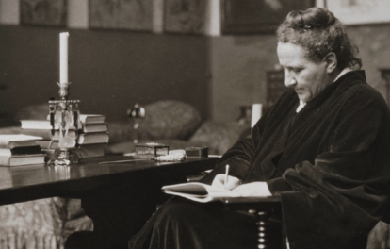
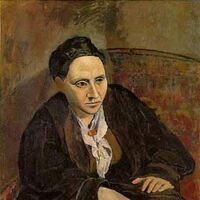
Gertrude Stein was born in Allegheny, Pennsylvania, on February 3, 1874, to wealthy German-Jewish immigrants. At the age of three, her family moved first to Vienna and then to Paris. They returned to America in 1878 and settled in Oakland, California. Her mother, Amelia, died of cancer in 1888 and her father, Daniel, died 1891. Stein attended Radcliffe College from 1893 to 1897, where she specialized in Psychology under noted psychologist William James. After leaving Radcliffe, she enrolled at the Johns Hopkins University, where she studied medicine for four years, leaving in 1901. Stein did not receive a formal degree from either institution. In 1903, Stein moved to Paris with Alice B. Toklas, a younger friend from San Francisco who would remain her partner and secretary throughout her life. The couple did not return to the United States for over thirty years. Together with Toklas and her brother Leo, an art critic and painter, Stein took an apartment on the Left Bank. Their home, 27 rue de Fleurus, soon became gathering spot for many young artists and writers including Henri Matisse, Ezra Pound, Pablo Picasso, Max Jacob, and Guillaume Apollinaire. She was a passionate advocate for the "new" in art, her literary friendships grew to include writers as diverse as William Carlos Williams, Djuana Barnes, F. Scott Fitzgerald, James Joyce, and Ernest Hemingway. It was to Hemingway that Stein coined the phrase "the lost generation" to describe the expatriate writers living abroad between the wars. By 1913, Stein's support of cubist painters and her increasingly avant-garde writing caused a split with her brother Leo, who moved to Florence. Her first book, Three Lives, was published in 1909. She followed it with Tender Buttons in 1914. Tender Buttons clearly showed the profound effect modern painting had on her writing. In these small prose poems, images and phrases come together in often surprising ways—similar in manner to cubist painting. Her writing, characterized by its use of words for their associations and sounds rather than their meanings, received considerable interest from other artists and writers, but did not find a wide audience. Sherwood Anderson in the introduction to Geography and Plays (1922) wrote that her writing "consists in a rebuilding, and entire new recasting of life, in the city of words." Among Stein's most influential works are The Making of Americans (1925); How to Write (1931); The Autobiography of Alice B. Toklas (1933), which was a best-seller; and Stanzas in Meditation and Other Poems [1929-1933] (1956). In 1934, the biographer T. S. Matthews described her as a "solid elderly woman, dressed in no-nonsense rough-spun clothes," with "deep black eyes that make her grave face and its archaic smile come alive." Stein died at the American Hospital at Neuilly on July 27, 1946, of inoperable cancer.
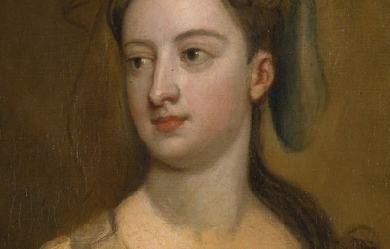
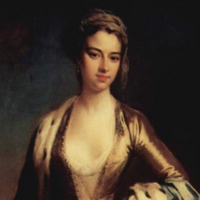
Lady Mary Wortley Montagu (baptized 26 May 1689– 21 August 1762) was an English aristocrat, letter writer and poet. Lady Mary is today chiefly remembered for her letters, particularly her letters from travels to the Ottoman Empire, as wife to the British ambassador to Turkey, which have been described by Billie Melman as “the very first example of a secular work by a woman about the Muslim Orient”. Aside from her writing, Lady Mary is also known for introducing and advocating for smallpox inoculation to Britain after her return from Turkey. Her writings usually address and challenge the hindering contemporary social attitudes towards women and their intellectual and social growth. Early life and education Lady Mary Wortley Montagu, Mary Pierrepont, was born in May 1689; her baptism took place on 26 May, at a few days old, at St. Paul’s Church in Covent Garden. She was the eldest child of Evelyn Pierrepont, 1st Duke of Kingston-upon-Hull, and his first wife, Mary (Fielding) Pierrepont. Her mother had three more children, two girls and a boy, before dying in October 1692. The children were raised by their Pierrepont grandmother until Mary was nine years old. Lady Mary was then passed to the care of her father upon her grandmother’s death. She began her education in her father’s home. Family holdings were extensive, including Thoresby Hall and Holme Pierrepont Hall in Nottinghamshire, and a house in West Dean in Wiltshire. To supplement the instruction of a despised governess, Lady Mary used the library in her father’s mansion, Thoresby Hall in Nottinghamshire, to “steal” her education, teaching herself Latin, a language reserved for men at the time. By 1705, at the age of fourteen or fifteen, Mary Pierrepont had written two albums filled with poetry, a brief epistolary novel, and a prose-and-verse romance modeled after Aphra Behn’s Voyage to the Isle of Love (1684). She also corresponded with two bishops, Thomas Tenison and Gilbert Burnet. Marriage and embassy to Ottoman Empire By 1710 Lady Mary had two possible suitors to choose from: Edward Wortley Montagu and Clotworthy Skeffington. Lady Mary corresponded with Edward Wortley Montagu via letters from 28 March 1710 to 2 May 1711. After May 1711 there was a break in contact between Lady Mary and Edward Wortley Montagu. Mary’s father, now Marquess of Dorchester, rejected Wortley Montagu as a prospect because he refused to entail his estate on a possible heir. Her father pressured her to marry Clotworthy Skeffington, heir to an Irish peerage. In order to avoid marriage to Skeffington, she eloped with Wortley. The marriage license is dated 17 August 1712, the marriage probably took place on 23 August 1712. The early years of Lady Mary Wortley Montagu’s married life were spent in the country. She had a son, Edward Wortley Montagu the younger, on 16 May 1713, in London. A couple of months later, on 1 July 1713 Lady Mary’s brother, aged twenty, died of smallpox and left behind two children. On 13 October 1714, her husband accepted post as Junior Commissioner of Treasury. When Lady Mary joined him in London, her wit and beauty soon made her a prominent figure at court. She was among the society of George I and the Prince of Wales, and counted amongst her friends Molly Skerritt, Lady Walpole, John, Lord Hervey, Mary Astell, Sarah Churchill, Duchess of Marlborough, Alexander Pope, John Gay, and Abbé Antonio Conti. In December 1715, Lady Mary contracted smallpox. She survived, but while she was ill someone circulated the satirical “court eclogues” she had been writing. One of the poems was read as an attack on Caroline, Princess of Wales, in spite of the fact that the “attack” was voiced by a character who was herself heavily satirized. In 1716, Edward Wortley Montagu was appointed Ambassador at Istanbul. In August 1716, Lady Mary accompanied him to Vienna, and thence to Adrianople and Istanbul. He was recalled in 1717, but they remained at Istanbul until 1718. While away from England, the Wortley Montagu’s had a daughter on 19 January 1718, who would grow up to be Mary, Countess of Bute. After an unsuccessful delegation between Austria and Turkey/Ottoman Empire, they set sail for England via the Mediterranean, and reached London on 2 October 1718. The story of this voyage and of her observations of Eastern life is told in Letters from Turkey, a series of lively letters full of graphic descriptions; Letters is often credited as being an inspiration for subsequent female travelers/writers, as well as for much Orientalist art. During her visit she was sincerely charmed by the beauty and hospitality of the Ottoman women she encountered, and she recorded her experiences in a Turkish bath. She also recorded a particularly amusing incident in which a group of Turkish women at a bath in Sofia, horrified by the sight of the stays she was wearing, exclaimed that "the husbands in England were much worse than in the East, for [they] tied up their wives in little boxes, the shape of their bodies". Lady Mary wrote about misconceptions previous travelers, specifically male travelers, had recorded about the religion, traditions and the treatment of women in the Ottoman Empire. Her gender and class status provided her with access to female spaces, that were closed off to males. Her personal interactions with Ottoman women enabled her to provide a more accurate account of Turkish women, their dress, habits, traditions, limitations and liberties. Lady Mary returned to the West with knowledge of the Ottoman practice of inoculation against smallpox, known as variolation. Ottoman smallpox inoculation Lady Mary Wortley Montagu defied convention most memorably by introducing smallpox inoculation to Western medicine after witnessing it during her travels and stay in the Ottoman Empire. In the Ottoman Empire, she visited the women in their segregated zenanas, making friends and learning about Turkish customs. There she witnessed the practice of inoculation against smallpox—variolation—which she called engrafting, and wrote home about it a number of her letters. Variolation used live smallpox virus in the pus taken from a smallpox blister in a mild case of the disease and introduced it into scratched skin of a previously uninfected person to promote immunity to the disease. Lady Mary’s brother had died of smallpox in 1713 and her own famous beauty had been marred by a bout with the disease in 1715. Lady Mary was eager to spare her children, thus, in March 1718 she had her nearly five-year-old son inoculated with the help of Embassy surgeon Charles Maitland. On her return to London, she enthusiastically promoted the procedure, but encountered a great deal of resistance from the medical establishment, because it was an Oriental folk treatment process. In April 1721, when a smallpox epidemic struck England, she had her daughter inoculated by Charles Maitland, the same physician who had inoculated her son at the Embassy in Turkey, and publicized the event. This was the first such operation done in Britain. She persuaded Princess Caroline to test the treatment. In August 1721, seven prisoners at Newgate Prison awaiting execution were offered the chance to undergo variolation instead of execution: they all survived and were released. Controversy over smallpox inoculation intensified, however, Caroline, Princess of Wales was convinced. The Princess’s two daughters were successfully inoculated in April 1722 by French-born surgeon Claudiius Amyand. In response to the general fear of inoculation, Lady Mary, under a pseudonym, wrote and published an article describing and advocating in favor of inoculation in September 1722. In later years, Edward Jenner, who was 13 years old when Lady Mary died, developed the much safer technique of vaccination using cowpox instead of smallpox. As vaccination gained acceptance, variolation gradually fell out of favor. Later years After returning to England, Lady Mary took less interest in court compared to her earlier years. Instead she was more focused on the upbringing of her children, reading, writing and editing her travel letters—which she then chose not to publish. Before starting for the East Lady Mary Wortley Montagu had met Alexander Pope, and during her Embassy travels with her husband, they wrote each other a series of letters. While Pope may have been fascinated by her wit and elegance, Lady Mary’s replies to his letters reveal that she was not equally smitten. Very few letters passed between them after Lady Mary’s return to England, and various reasons have been suggested for the subsequent estrangement. In 1728, Pope attacked Lady Mary in his Dunciad inaugurating a decade in which most of his publications made some sort of allegation against her. Lady Mary went through a series of trials with her children. In 1726 and 1727, Lady Mary’s son ran away from Westminster School several times. He was entrusted to a tutor with strict orders to keep young Edward Montagu abroad. In later years her son managed to return to England without permission and continued to have a strained relationship with both his parents. In August 1736, Lady Mary’s daughter, married John Stuart, 3rd Earl of Bute, despite her parent’s disapproval of the match. The same year Lady Mary met and fell in love with Francesco Algarotti, Count Algarotti, competing with an equally smitten John Hervey for the Count’s affections. Lady Mary wrote many letters to Algarotti in English and in French after his departure from England in September 1736. In July 1739 Lady Mary departed England ostensibly for health reasons declaring her intentions to winter in the south of France. In reality, she left to visit and live with Algarotti in Venice. Their relationship ended in 1741 after Lady Mary and Algarotti were both on diplomatic mission in Turin. Lady Mary stayed abroad and traveled extensively. After traveling to Venice, Florence, Rome, Genoa and Geneva, she finally settled in Avignon in 1742. She left Avignon in 1746 for Brescia, where she fell ill and stayed for nearly a decade, leaving for Lovere in 1754. After August 1756, she resided in Venice and Padua and saw Algarotti again in November. Lady Mary exchanged letters with her daughter, Lady Bute, discussing topics such as philosophy, literature, and the education of girls, as well as conveying details of her geographical and social surroundings. Lady Mary received news of her husband Edward Wortley Montagu’s death in 1761 and left Venice for England. En route to London, she handed her Embassy Letters to the Rev. Benjamin Sowden of Rotterdam, for safe keeping and “to be dispos’d of as he thinks proper”. Lady Mary reached London in January 1762, and died in the year of her return, on 21 August 1762. Important works and literary place Although Lady Mary Wortley Montagu is now best known for her Embassy Letters, she wrote poetry and essays as well. A number of Lady Mary’s poems and essays were printed in her lifetime, either without or with her permission, in newspapers, in miscellanies, and independently. Montagu did not intend to publish her poetry, but it did circulate widely, in manuscript, among members of her own social circle. Lady Mary was highly suspicious of any idealizing literary language. She wrote most often in heroic couplets, a serious poetic form to employ, and, according to Susan Staves,"excelled at “answer poems.”. Some of her widely anthologized poems include “Constantinople” and “Epistle from Mrs. Yonge to her Husband.” “Constantinople,” written January 1718, is a beautiful poem in heroic couplets describing Britain and Turkey through human history, and representing the state of mind “of knaves, coxcombs, the mob, and party zealous—all characteristic of the London of her time.”. “Epistle from Mrs. Yonge to her Husband,” written 1724, stages a letter from Mrs. Yonge to her libertine husband and exposes the social double standard which led to the shaming and distress of Mrs. Yonge after her divorce. In 1737 and 1738, Lady Mary published anonymously a political periodical called the Nonsense of Common-Sense, supporting the Robert Walpole government (the title was a reference to a journal of the liberal opposition entitled Common Sense). She wrote six Town Eclogues. She wrote notable letters describing her travels through Europe and the Ottoman Empire; these appeared after her death in three volumes. Lady Mary corresponded with Anne Wortley and wrote courtship letters to her future husband Edward Wortley Montagu, as well as love letters to Francesco Algarotti. She corresponded with notable writers, intellectuals and aristocrats of her day. She wrote gossip letters and letters berating the vagaries of fashionable people to her sister, Lady Mar, and exchanged intellectual letters with her adult daughter, Lady Bute. Although, not published during her lifetime, her letters from Turkey were clearly intended for print. She revised them extensively and gave a transcript to the Rev. Benjamin Sowden in Rotterdam in 1761. During the twentieth century Lady Mary’s letters were edited separately from her essays, poems and plays. Montagu’s Turkish letters were to prove an inspiration to later generations of European women travelers and writers. In particular, Montagu staked a claim to the authority of women’s writing, due to their ability to access private homes and female-only spaces where men were not permitted. The title of her published letters refers to “Sources that Have Been Inaccessible to Other Travellers”. The letters themselves frequently draw attention to the fact that they present a different (and, Montagu asserts, more accurate) description than that provided by previous (male) travelers: “You will perhaps be surpriz’d at an Account so different from what you have been entertaind with by the common Voyage-writers who are very fond of speaking of what they don’t know.”. Montagu provides an intimate description of the women’s bathhouse in Sofia, in which she derides male descriptions of the bathhouse as a site for unnatural sexual practices, instead insisting that it was “the Women’s coffee house, where all the news of the Town is told, Scandal invented, etc”. However, Montagu’s detailed descriptions of nude Oriental beauties provided inspiration for male artists such as Ingres, who restored the explicitly erotic content that Montagu had denied. In general, Montagu dismisses the quality of European travel literature of the 18th century as nothing more than "trite observations…superficial…[of] boys [who] only remember where they met with the best wine or the prettyest women.". Montagu’s Turkish letters were frequently cited by imperial women travelers, more than a century after her journey. Such writers cited Montagu’s assertion that women travelers could gain an intimate view of Turkish life that was not available to their male counterparts. However, they also added corrections or elaborations to her observations. In 1739 a book was printed by an unknown author under the pseudonym “Sophia, a person of quality”, titled Woman not Inferior to Man. This book is often attributed to Lady Mary. Her Letters and Works were published in 1837. Montagu’s octogenarian granddaughter Lady Louisa Stuart contributed to this, anonymously, an introductory essay called Biographical Anecdotes of Lady M. W. Montagu, from which it was clear that Stuart was troubled by her grandmother’s focus on sexual intrigues and did not see Lady Mary Wortley Montagu’s Account of the Court of George I at his Accession as history. However, Montagu’s historical observations, both in the “Anecdotes” and the “Turkish Embassy Letters,” prove quite accurate when put in context. Despite the availability of her work in print and the revival efforts of Feminist scholars, the complexity and brilliance of Lady Mary Wortley Montagu’s extensive body of work has not yet been recognized to the fullest.


"These words I write, they tell my story---not through what they say, but through what they make you feel." A Few of My Favorites: "Pain Creates Hope(Version 2)" "A New Appreciation" "Saving Grace" "The End" "Human being," like "Men working" and "Children playing," is a sentence with a noun, a verb, and the possibility of an imminent disaster.
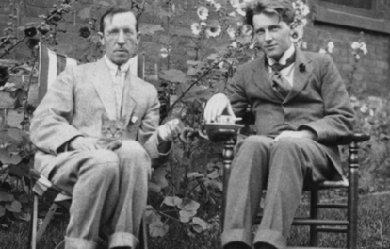
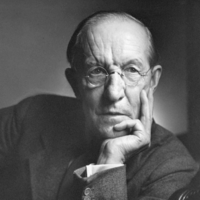
Duncan Campbell Scott (August 2, 1862– December 19, 1947) was a Canadian bureaucrat, poet and prose writer. With Charles G.D. Roberts, Bliss Carman, and Archibald Lampman, he is classed as one of Canada’s Confederation Poets. Scott was a Canadian lifetime civil servant who served as deputy superintendent of the Department of Indian Affairs from 1913 to 1932, and is better known today for advocating the assimilation of Canada’s First Nations peoples in that capacity. Life and legacy Scott was born in Ottawa, Ontario, the son of Rev. William Scott and Janet MacCallum. He was educated at Stanstead Wesleyan College. Early in life, he became an accomplished pianist. Scott wanted to be a doctor, but family finances were precarious, so in 1879 he joined the federal civil service. As the story goes, q:William Scott might not have money [but] he had connections in high places. Among his acquaintances was the prime minister, Sir John A. Macdonald, who agreed to meet with Duncan. As chance would have it, when Duncan arrived for his interview, the prime minister had a memo on his desk from the Indian Branch of the Department of the Interior asking for a temporary copying clerk. Making a quick decision while the serious young applicant waited in front of him, Macdonald wrote across the request: 'Approved. Employ Mr. Scott at $1.50.’ Scott "spent his entire career in the same branch of government, working his way up to the position of deputy superintendent of Indian Affairs in 1913, the highest non-elected position possible in his department. He remained in this post until his retirement in 1932.” Scott’s father also subsequently found work in Indian Affairs, and the entire family moved into a newly built house on 108 Lisgar St., where Duncan Campbell Scott would live for the rest of his life. In 1883 Scott met fellow civil servant, Archibald Lampman. It was the beginning of an instant friendship that would continue unbroken until Lampman’s death sixteen years later.... It was Scott who initiated wilderness camping trips, a recreation that became Lampman’s favourite escape from daily drudgery and family problems. In turn, Lampman’s dedication to the art of poetry would inspire Scott’s first experiments in verse. By the late 1880s Scott was publishing poetry in the prestigious American magazine, Scribner’s. In 1889 his poems “At the Cedars” and “Ottawa” were included in the pioneering anthology, Songs of the Great Dominion. Scott and Lampman "shared a love of poetry and the Canadian wilderness. During the 1890s the two made a number of canoe trips together in the area north of Ottawa.” In 1892 and 1893, Scott, Lampman, and William Wilfred Campbell wrote a literary column, “At the Mermaid Inn,” for the Toronto Globe. "Scott... came up with the title for it. His intention was to conjure up a vision of The Mermaid Inn Tavern in old London where Sir Walter Raleigh founded the famous club whose members included Ben Jonson, Beaumont and Fletcher, and other literary lights. In 1893 Scott published his first book of poetry, The Magic House and Other Poems. It would be followed by seven more volumes of verse: Labor and the Angel (1898), New World Lyrics and Ballads (1905), Via Borealis (1906), Lundy’s Lane and Other Poems (1916), Beauty and Life (1921), The Poems of Duncan Campbell Scott (1926) and The Green Cloister (1935). In 1894, Scott married Belle Botsford, a concert violinist, whom he had met at a recital in Ottawa. They had one child, Elizabeth, who died at 12. Before she was born, Scott asked his mother and sisters to leave his home (his father had died in 1891), causing a long-time rift in the family. In 1896 Scott published his first collection of stories, In the Village of Viger, "a collection of delicate sketches of French Canadian life. Two later collections, The Witching of Elspie (1923) and The Circle of Affection (1947), contained many fine short stories." Scott also wrote a novel, although it was not published until after his death (as The Untitled Novel, in 1979). After Lampman died in 1899, Scott helped publish a number of editions of Lampman’s poetry. Scott “was a prime mover in the establishment of the Ottawa Little Theatre and the Dominion Drama Festival.” In 1923 the Little Theatre performed his one-act play, Pierre; it was later published in Canadian Plays from Hart House Theatre (1926). His wife died in 1929. In 1931 he married poet Elise Aylen, more than 30 years his junior. After he retired the next year, "he and Elise spent much of the 1930s and 1940s travelling in Europe, Canada and the United States.” He died in December 1947 in Ottawa at the age of 85 and is buried in Ottawa’s Beechwood Cemetery. Indian Affairs Prior to taking up his position as head of the Department of Indian Affairs, in 1905 Scott was one of the Treaty Commissioners sent to negotiate Treaty No. 9 in Northern Ontario. Aside from his poetry, Scott made his mark in Canadian history as the head of the Department of Indian Affairs from 1913 to 1932. Even before Confederation, the Canadian government had adopted a policy of assimilation under the Gradual Civilization Act 1857. One biographer of Scott states that: The Canadian government’s Indian policy had already been set before Scott was in a position to influence it, but he never saw any reason to question its assumption that the 'red’ man ought to become just like the 'white’ man. Shortly after he became Deputy Superintendent, he wrote approvingly: ‘The happiest future for the Indian race is absorption into the general population, and this is the object and policy of our government.’... Assimilation, so the reasoning went, would solve the ‘Indian problem,’ and wrenching children away from their parents to 'civilize’ them in residential schools until they were eighteen was believed to be a sure way of achieving the government’s goal. Scott... would later pat himself on the back: ‘I was never unsympathetic to aboriginal ideals, but there was the law which I did not originate and which I never tried to amend in the direction of severity.’ while Scott himself wrote: I want to get rid of the Indian problem. I do not think as a matter of fact, that the country ought to continuously protect a class of people who are able to stand alone… Our objective is to continue until there is not a single Indian in Canada that has not been absorbed into the body politic and there is no Indian question, and no Indian Department, that is the whole object of this Bill. In 1920, under Scott’s direction, and with the concurrence of the major religions involved in native education, an amendment to the Indian Act made it mandatory for all native children between the ages of seven and fifteen to attend school. Attendance at a residential school was made compulsory. Although a reading of Bill 14 states that no particular kind of school was stipulated. Scott was in favour of residential schooling for aboriginal children, as he believed removing them from the influences of home and reserve would hasten the cultural and economic transformation of the whole aboriginal population. In cases where a residential school was the only kind available, residential enrollment did become mandatory, and aboriginal children were compelled to leave their homes, their families and their culture, with or without their parents’ consent. However, in 1901, 226 of the 290 Indian schools across Canada were day schools, and by 1961, the 377 day schools far outnumbered the 56 residential institutions. CBC has reported that "In all, about 150,000 aboriginal, Inuit and Métis children were removed from their communities and forced to attend the schools." The 150,000 enrollment figure is an estimate not disputed by Aboriginal Affairs and Northern Development, but it is not clear what percentage were “removed from their communities and forced to attend the schools.” A percentage of the residential schools were in or close by the children’s communities. Moreover, while many aboriginal parents distrusted the residential schools or preferred to raise and educate their children in a traditional manner, other parents willingly enrolled their children, partly from a belief that the schooling of the “white man” would benefit them, and partly from a knowledge that schools would provide shelter, food and clothing which dire conditions on the reserve could not provide. Harsh criticism has been leveled at Scott and the residential school system, as children who attended some of the more poorly maintained or administered schools lived in terrible conditions; in some cases the mortality rate exceeded fifty percent due to the spread of infectious disease. This situation was made worse by the federal policy that tied funding to enrollment numbers, which resulted in some schools enrolling sick children in order to boost their numbers. Echoing Scott’s desire to absorb aboriginals into the wider Canadian population, many residential and day schools strongly discouraged students from speaking their native language, and harsh punishments were administered. Corporal punishment was sometimes justified by the belief that it was the only way to “save souls”, “civilize” the native children and, in the residential schools, punish runaways who might make the school responsible for injury or death while trying to return home. Many reports of physical, sexual and psychological abuse in the residential schools have surfaced over the years. Because any kind of scandal coming out of the residential schools would have caused Indian Affairs, the churches and the government of the day much embarrassment, incidents of abuse were often discounted or covered up. When Scott retired, his “policy of assimilating the Indians had been so much in keeping with the thinking of the time that he was widely praised for his capable administration.” At the time, Scott was able to point to evidence of success in increasing enrollment and attendance, as the number of First Nations children enrolled in any school rose from 11,303 in 1912 to 17,163 in 1932. Residential school enrollment during the same period rose from 3,904 to 8,213. Actual attendance figures from all schools had also risen sharply, going from 64% of enrollment in 1920 to 75% in 1930, and Scott attributed this rise partly to Bill 14's section on compulsory attendance but also to a more positive attitude among First Nations people toward education. However, despite the encouraging statistics, Scott’s efforts to bring about assimilation through residential schools could be judged a failure, as many former students retained their language, went on to maintain and preserve their tribe’s culture, and refused to accept full Canadian citizenship when it was offered. Moreover, over the long history of the residential system, only a minority of all enrolled students went beyond the elementary grades, and many former students found themselves lacking the skills that would enable them to find employment on or off the reserve. Honours and awards Scott was honoured for his writing during and after his lifetime. He was elected a Fellow of the Royal Society of Canada in 1899 and served as its president from 1921 to 1922. The Society awarded him the second-ever Lorne Pierce Medal in 1927 for his contributions to Canadian literature. In 1934 he was made a Companion of the Order of St. Michael and St. George. He also received honorary degrees from the University of Toronto (Doctor of Letters in 1922) and Queen’s University (Doctor of Laws in 1939). In 1948, the year after his death, he was designated a Person of National Historic Significance. Poetry Scott’s "literary reputation has never been in doubt. He has been well represented in virtually all major anthologies of Canadian poetry published since 1900.” In Poets of the Younger Generation (1901), Scottish literary critic William Archer wrote of Scott: He is above everything a poet of climate and atmosphere, employing with a nimble, graphic touch the clear, pure, transparent colours of a richly-furnished palette.... Though it must not be understood that his talent is merely descriptive. There is a philosophic and also a romantic strain in it... There is scarcely a poem of Mr. Scott’s from which one could not cull some memorable descriptive passage.... As a rule Mr. Scott’s workmanship is careful and highly finished. He is before everything a colourist. He paints in lines of a peculiar and vivid translucency. But he is also a metrist of no mean skill, and an imaginative thinker of no common capacity. The Government of Canada biography of him says that: Although the quality of Scott’s work is uneven, he is at his best when describing the Canadian wilderness and Indigenous peoples. Although they constitute a small portion of his total output, Scott’s widely recognized and valued 'Indian poems’ cemented his literary reputation. In these poems, the reader senses the conflict that Scott felt between his role as an administrator committed to an assimilation policy for Canada’s Native peoples and his feelings as a poet, saddened by the encroachment of European civilization on the Indian way of life. “There is not a really bad poem in the book,” literary critic Desmond Pacey said of Scott’s first book, The Magic House and Other Poems, “and there are a number of extremely good ones.” The 'extremely good ones’ include the strange, dream-like sonnets of “In the House of Dreams.” “Probably the best known poem from the collection is ‘At the Cedars,’ a grim narrative about the death of a young man and his sweetheart during a log-jam on the Ottawa River. It is crudely melodramatic,... but its style—stark understatement, irregular lines, and abrupt rhymes—makes it the most experimental poem in the book.” His next book, Labour and the Angel, “is a slighter volume than The Magic House in size and content. The lengthy title poem makes dreary reading.... Of greater interest is his growing willingness to experiment with stanza form, variations in line length, use of partial rhyme, and lack of rhyme.” Notable new poems included “The Cup” and the sonnet “The Onandaga Madonna.” But arguably “the most memorable poem in the new collection” was the fantasy, “The Piper of Arll.” One person who long remembered that poem was future British Poet Laureate John Masefield, who read “The Piper of Arll” as a teenager and years later wrote to Scott: I had never (till that time) cared very much for poetry, but your poem impressed me deeply, and set me on fire. Since then poetry has been the one deep influence in my life, and to my love of poetry I owe all my friends, and the position I now hold. New World Lyrics and Ballads (1905) revealed “a voice that is sounding ever more different from the other Confederation Poets... his dramatic power is increasingly apparent in his response to the wilderness and the lives of the people who lived there.” The poetry included “On the Way to the Mission” and the much-anthologized “The Forsaken,” two of Scott’s best-known “Indian poems.” Lundy’s Lane and Other Poems (1916) seemed “to have been cobbled together at the insistence of his publishers, who wanted a collection of his work that had not been published in any previous volume.”. The title poem was one that had won Scott, "in the Christmas Globe contest of 1908,... the prize of one hundred dollars, offered for the best poem on a Canadian historical theme.". Other notable poems in the volume include the pretty lyric “A Love Song,” the long meditation, “The Height of Land,” and the even longer “Lines Written in Memory of Edmund Morris.” Anthologist John Garvin called the last “so original, tender and beautiful that it is destined to live among the best in Canadian literature.” “In his old age, Scott would look back upon Beauty and Life (1921) as his favourite among his volumes of verse," E.K. Brown tells us, adding: “In it most of the poetic kinds he cared about are represented.” There is a great diversity, from the moving war elegy “To a Canadian Aviator Who Died For His Country in France,” to the strange, apocalyptic “A Vision.” The Green Cloister, published after Scott’s retirement, "is a travelogue of the sites he visited in Europe with Elise: Lake Como, Ravelllo, Kensington Gardens, East Gloucester, etc.—descriptive and contemplative poems by an observant tourist. Those with a Canadian setting include two Indian poems of near-melodrama—'A Scene at Lake Manitou’ and 'At Gull Lake, August 1810'—that are in stark contrast to the overall serenity of the volume." More typical is the title poem, “Chiostro Verde.” The Circle of Affection (1947) contains 26 poems Scott had written since Cloister, and several prose pieces, including his Royal Society address on “Poetry and Progress.” It includes “At Delos,” which brings to mind the poet’s approaching death: There is no grieving in the world As beauty fades throughout the years: The pilgrim with the weary heart Brings to the grave his tears. Reputation as an assimilationist In 2003, Scott’s Indian Affairs legacy came under attack from Neu and Therrien: [Scott] took a romantic interest in Native traditions, he was after all a poet of some repute (a member of the Royal Society of Canada), as well as being an accountant and a bureaucrat . He was three people rolled into one confusing and perverse soul. The poet romanticized the whole 'noble savage’ theme, the bureaucrat lamented our inability to become civilized, the accountant refused to provide funds for the so-called civilization process. In other words, he disdained all ‘living’ Natives but “extolled the freedom of the savages”. According to Encyclopædia Britannica, Scott is "best known at the end of the 20th century," not for his writing, but “for advocating the assimilation of Canada’s First Nations peoples.” As part of their Worst Canadian poll, a panel of experts commissioned by Canada’s National History Society named Scott one of the Worst Canadians in the August 2007 issue of The Beaver. In his 2013 Conversations with a Dead Man: The Legacy of Duncan Campbell Scott, fabulist Mark Abley explored the paradoxes surrounding Scott’s career. Abley did not attempt to defend Scott’s work as a bureaucrat, but he showed that Scott is more than simply a one-dimensional villain. Controversy over Arc Poetry prize Arc Poetry Magazine renamed the annual “Archibald Lampman Award” (given to a poet in the National Capital Region) to the Lampman-Scott Award in recognition of Scott’s enduring legacy in Canadian poetry, with the first award under the new name given out in 2007. The winner of the 2008 award, Shane Rhodes, turned over half of the $1,500 prize money to the Wabano Centre for Aboriginal Health, a First Nations health centre. “Taking that money wouldn’t have been right, with what I’m writing about,” Rhodes said. The poet was researching First Nations history and found Scott’s name repeatedly referenced. In the words of a CBC News report, Rhodes felt “Scott’s legacy as a civil servant overshadows his work as a pioneer of Canadian poetry”. The editor of Arc Poetry Magazine, Anita Lahey, responded with a statement that she thought Scott’s actions as head of Indian Affairs were important to remember, but did not eclipse his role in the history of Canadian literature. “I think it matters that we’re aware of it and that we think about and talk about these things,” she said. “I don’t think controversial or questionable activities in the life of any artist or writer is something that should necessarily discount the literary legacy that they leave behind.” More recently, the magazine has stated on its website that "For the years 2007 through 2009, the Archibald Lampman Award merged with the Duncan Campbell Scott Foundation to become the Lampman-Scott Award in honour of two great Confederation Poets. This partnership came to an end in 2010, and the prize returned to its former identity as the Archibald Lampman Award for Poetry.” Publications Poetry * The Magic House and Other Poems. London: Methuen and Co. 1893. - The Magic House and Other Poems at Google Books * Labor and the Angel. Boston: Copeland & Day. 1898. – Labor and the Angel at Google Books– Labor and the Angel - Scholar’s Choice Edition at Google Books * New World Lyrics and Ballads. Toronto: Morang & Co. – New World Lyrics and Ballads at Google Books– New World Lyrics and Ballads - Scholar’s Choice Edition at Google Books * Via Borealis. Toronto: W. Tyrell. 1906. * Lundy’s Lane and Other Poems. Toronto: McClelland, Stewart & Stewart. 1916. - Lundy’s Lane and Other Poems at Google Books * To the Canadian Mothers and Three Other Poems. Toronto: Mortimer. 1917. * “After a Night of Storm” (PDF). Dalhousie Review 1 (2). 1921. * Beauty and Life. Toronto: McClelland & Stewart. 1921. - Beauty and Life at Google Books * “Permanence” (PDF). Dalhousie Review 2 (4). 1923. * The Poems of Duncan Campbell Scott. Toronto: McClelland & Stewart. 1926. - The Poems of Duncan Campbell Scott at Google Books * “By the Sea” (PDF). Dalhousie Review 7 (1). 1927. * The Green Cloister: Later Poems. Toronto: McClelland & Stewart. 1935. - The Green Cloister: Later Poems at Google Books * Brown, E.K., ed. (1951). Selected Poems. Toronto: Ryerson. * Clever, Glenn, ed. (1974). Duncan Campbell Scott: Selected Poetry. Ottawa: Tecumseh. ISBN 978-0-9196-6252-0. * Souster, Raymond; Lochhead, Douglas, eds. (1985). Powassan’s Drum: Selected Poems of Duncan Campbell Scott. Ottawa: Tecumseh. ISBN 978-0-9196-6211-7. Fiction * In the Village of Viger. Boston: Copeland & Day. 1896. - In the Village of Viger at Google Books * The Witching of Elspie: A Book of Stories. Toronto: McClelland & Stewart. 1923. * The Circle of Affection and Other Pieces in Prose and Verse. Toronto: McClelland & Stewart. 1947. - mostly prose * Clever, Glenn, ed. (1987) [1972]. Selected Stories of Duncan Campbell Scott (revised 3rd ed.). Ottawa: University of Ottawa Press. ISBN 978-0-7766-0183-0. * Untitled Novel (posthumously published). Moonbeam, Ontario: Penumbra. 1979 [c. 1905]. ISBN 0-920806-04-X. * Ware, Tracy, ed. (2001). “The Uncollected Short Stories of Duncan Campbell Scott”. Duncan Campbell Scott. London, Ontario: Canadian Poetry Press. Non-fiction * John Graves Simcoe. Makers of Canada, volume VII. Toronto: Morang & Co. 1905. - John Graves Simcoe at Google Books * The Administration of Indian Affairs in Canada. Volume 3. Toronto: Canadian Institute of International Affairs. 1931. * Walter J. Phillips. Toronto: Ryerson. 1947. - Walter J. Phillips at Google Books * Bourinot, Arthur S., ed. (1960). More Letters of Duncan Campbell Scott. Ottawa: Bourinot. * Davies, Barrie, ed. (1979). At the Mermaid Inn: Wilfred Campbell, Archibald Lampman, Duncan Campbell Scott in the Globe 1892–93. Toronto: University of Toronto Press. ISBN 978-0-8020-6333-5. * Macdougall, Robert L., ed. (1983). The Poet and the Critic: A Literary Correspondence Between Duncan Campbell Scott and E.K. Brown. Ottawa: Carleton University Press. ISBN 978-0-8862-9013-9. Edited * Lampman, Archibald (1900). Scott, Duncan Campbell, ed. The Poems of Archibald Lampman. Toronto: Morang & Co. * Lampman, Archibald (1925). Scott, Duncan Campbell, ed. Lyrics of Earth: Sonnets and Ballads. Toronto: Musson. * Lampman, Archibald (1943). Scott, Duncan Campbell, ed. At the Long Sault and Other New Poems. Toronto: Ryerson. * Lampman, Archibald (1947). Scott, Duncan Campbell, ed. Selected Poems of Archibald Lampman. Toronto: Ryerson. References Wikipedia—https://en.wikipedia.org/wiki/Duncan_Campbell_Scott
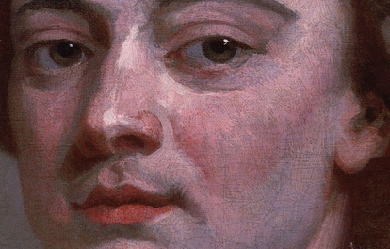

John Gay (/ɡeɪ/; 30 June 1685– 4 December 1732) was an English poet and dramatist and member of the Scriblerus Club. He is best remembered for The Beggar’s Opera (1728), a ballad opera. The characters, including Captain Macheath and Polly Peachum, became household names. Early life Gay was born in Barnstaple, England, and was educated at the town’s grammar school. On leaving school he was apprenticed to a silk mercer in London, but being weary, according to Samuel Johnson, “of either the restraint or the servility of his occupation”, he soon returned to Barnstaple, where he was educated by his uncle, the Rev. John Hanmer, the Nonconformist minister of the town. He then returned to London. Early career The dedication of his Rural Sports (1713) to Alexander Pope was the beginning of a lasting friendship. In 1714, Gay wrote The Shepherd’s Week, a series of six pastorals drawn from English rustic life. Pope had urged him to undertake this task in order to ridicule the Arcadian pastorals of Ambrose Philips, who had been praised by a short-lived contemporary publication The Guardian, to the neglect of Pope’s claims as the first pastoral writer of the age and the true English Theocritus. Gay’s pastorals achieved this goal and his ludicrous pictures of the English country lads and their loves were found to be entertaining on their own account. Gay had just been appointed secretary to the British ambassador to the court of Hanover through the influence of Jonathan Swift when the death of Anne, Queen of Great Britain, three months later put an end to all his hopes of official employment. In 1715, probably with some help from Pope, he produced What d’ye call it?, a dramatic skit on contemporary tragedy, with special reference to Thomas Otway’s Venice Preserv’d. It left the public so ignorant of its real meaning that Lewis Theobald and Benjamin Griffin published a Complete Key to what d’ye call it to explain it. In 1716 appeared his Trivia, or the Art of Walking the Streets of London, a poem in three books, for which he acknowledged having received several hints from Swift. It contains graphic and humorous descriptions of the London of that period. What is most interesting about the poem, however, is not the fact that it depicts the city with photographic accuracy, but that it acts as a guide to the upper, and upper-middle class walkers of society. In taking a mock-heroic form, Gay’s poem was able to poke fun at the notion of complete reformation of street civility, while also proposing an idea of reform in terms of the attitude towards walking. In January 1717 he produced the comedy, Three Hours After Marriage, which was thought to be grossly indecent (without being amusing) and a failure. He had assistance from Pope and John Arbuthnot, but they allowed it to be assumed that Gay was the sole author. Patrons Gay had numerous patrons, and in 1720 he published Poems on Several Occasions by subscription, taking in £1000 or more. In that year James Craggs, the secretary of state, presented him with some South Sea stock. Gay, disregarding the advice of Pope and others of his friends, invested all his money in South Sea stock, and, holding on to the end of the South Sea Bubble, he lost everything. The shock is said to have made him dangerously ill. His friends did not fail him at this juncture. He had patrons in William Pulteney, afterwards Earl of Bath, in the third Earl of Burlington, who constantly entertained him at Chiswick or at Burlington House, and in the third Duke of Queensberry. He was a frequent visitor with Pope, and received unvarying kindness from William Congreve and John Arbuthnot. In 1727 he wrote for six-year-old Prince William, later the Duke of Cumberland, Fifty-one Fables in Verse, for which he naturally hoped to gain some preferment, although he has much to say in them of the servility of courtiers and the vanity of court honours. He was offered the situation of gentleman-usher to the Princess Louisa, who was also still a child. He refused this offer, which all his friends seem to have regarded as an indignity. He had never rendered any special services to the court. The Beggar’s Opera He certainly did nothing to conciliate the favour of the government by his next work, The Beggar’s Opera, a ballad opera produced on the 29 January 1728 by John Rich, in which Sir Robert Walpole was caricatured. This famous piece, which was said to have made “Rich gay and Gay rich”, was an innovation in many respects. The satire of the play has a double allegory. The characters of Peachum and Macheath represent the famous highwayman and gangster Jonathan Wild and the cockney housebreaker Jack Sheppard. At the same time, Macheath was understood to represent Robert Walpole, whose government had been tolerant of Wild’s thievery and the South Sea directors’ escape from punishment. Under cover of the thieves and highwaymen who figured in it was disguised a satire on society, for Gay made it plain that in describing the moral code of his characters he had in mind the corruptions of the governing class. Part of the success of The Beggar’s Opera may have been due to the acting of Lavinia Fenton, afterwards Duchess of Bolton, in the part of Polly Peachum. The play ran for sixty-two nights. Swift is said to have suggested the subject, and Pope and Arbuthnot were constantly consulted while the work was in progress, but Gay must be regarded as the sole author. After seeing an early version of the work, Swift was optimistic of its commercial prospects but famously warned Gay to be cautious with his earnings: “I beg you will be thrifty and learn to value a shilling.” Later career He wrote a sequel, Polly, relating the adventures of Polly Peachum in the West Indies; its production was forbidden by the Lord Chamberlain, no doubt through the influence of Walpole. This act of “oppression” caused no loss to Gay. It proved an excellent advertisement for Polly, which was published by subscription in 1729, and brought its author several thousand pounds. The Duchess of Queensberry was dismissed from court for enlisting subscribers in the palace. The Duke of Queensberry gave Gay a home, and the duchess continued her affectionate patronage until Gay’s death in London on 4 December 1732. He was buried in Westminster Abbey. The epitaph on his tomb is by Pope, and is followed by Gay’s own mocking couplet: Works * Among Gay’s works are: * Wine– 1708 * The Present State of Wit– 1711 * The Rural Sports– 1713 * The Shepherd’s Week– 1714 * The What D’ye Call It– 1715 * Trivia, or The Art of Walking the Streets of London– 1716 * Acis and Galatea– 1718 * Poems on Several Occasions– 1720 * Fables (also known as Fifty-one Fables in Verse or Fables of John Gay)– 1727 (Part the Second– 1738) * The Beggar’s Opera– 1728 * Polly– 1729 * Achilles– 1733 * The Distress’d Wife– 1743 * Three Hours After Marriage– 1717 References Wikipedia—https://en.wikipedia.org/wiki/John_Gay


Li-Young Lee (李立揚, pinyin: Lǐ Lìyáng) (born August 19, 1957) is an American poet. He was born in Jakarta, Indonesia, to Chinese parents. His maternal great-grandfather was Yuan Shikai, China’s first Republican President, who attempted to make himself emperor. Lee’s father, who was a personal physician to Mao Zedong while in China, relocated his family to Indonesia, where he helped found Gamaliel University. His father was exiled and spent 19 months in an Indonesian prison camp in Macau. In 1959 the Lee family fled the country to escape anti-Chinese sentiment and after a five-year trek through Hong Kong and Japan, they settled in the United States in 1964. Li-Young Lee attended the University of Pittsburgh and the University of Arizona, and the State University of New York at Brockport. Development as a poet Lee attended the University of Pittsburgh, where he began to develop his love for writing. He had seen his father find his passion for ministry and as a result of his father reading to him and encouraging Lee to find his passion, Lee began to dive into the art of language. Lee’s writing has also been influenced by classic Chinese poets, such as Li Bai and Du Fu. Many of Lee’s poems are filled with themes of simplicity, strength, and silence. All are strongly influenced by his family history, childhood, and individuality. He writes with simplicity and passion which creates images that take the reader deeper and also requires his audience to fill in the gaps with their own imagination. These feelings of exile and boldness to rebel take shape as they provide common themes for poems. Lee’s influence on Asian American poetry Li-Young Lee has been an established Asian American poet who has been doing interviews for the past twenty years. Breaking the Alabaster Jar: Conversations with Li-Young Lee (BOA Editions, 2006, ed. Earl G. Ingersoll), is the first edited and published collection of interviews with an Asian American poet. In this book, Earl G. Ingersoll has collected interviews with the poet consisting of “conversational” questions meant to bring out Lee’s views on Asian American poetry, writing, and identity. Awards and honors * Lee has won numerous poetry awards: * 1986: Delmore Schwartz Memorial Award, from New York University, for Rose * 1988: Whiting Award * 1990: Lamont Poetry Selection for The City in Which I Love You * 1995: Lannan Literary Award * 1995: American Book Award, from the Before Columbus Foundation, for The Wingéd Seed: A Remembrance * 2002: William Carlos Williams Award for Book of My Nights (American Poets Continuum) Judge: Carolyn Kizer * 2003: Fellowship of the Academy of American Poets, which does not accept applications and which includes a $25,000 stipend * Fellowship, National Endowment for the Arts * Fellowship, John Simon Guggenheim Memorial Foundation * Grant, Illinois Arts Council * Grant, Commonwealth of Pennsylvania * Grant, Pennsylvania Council on the Arts Other recognition * 2011: Lee’s poem ″A Story″ was featured in the AP English Literature and Composition 2011 Free-Response Questions. Selected bibliography Poetry * * 1986: Rose. Rochester: BOA Editions Limited, ISBN 0-918526-53-1 * 1990: The City In Which I Love You. Rochester: BOA Editions Limited, ISBN 0-918526-83-3 * 2001: Book of My Nights. Rochester: BOA Editions Limited, ISBN 1-929918-08-9 * 2008: Behind My Eyes. New York: W.W. Norton & Co., ISBN 0-393-33481-3 Memoir * * The Wingéd Seed: A Remembrance. (hardcover) New York: Simon & Schuster, 1995. ASIN: B000NGRB2G (paperback) St. Paul: Ruminator, 1999. ISBN 1-886913-28-5 References Wikipedia—https://en.wikipedia.org/wiki/Li-Young_Lee
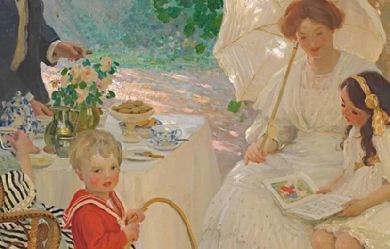
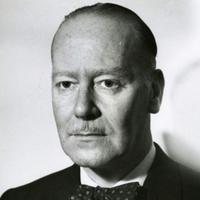
Kenneth Adolf Slessor OBE (27 March 1901– 30 June 1971) was an Australian poet, journalist and official War Correspondent in World War II. He was one of Australia’s leading poets, notable particularly for the absorption of modernist influences into Australian poetry. The Kenneth Slessor Prize for Poetry is named after him. Early life Slessor was born Kenneth Adolphe Schloesser in Orange, New South Wales. As a boy, he lived in England for a time with his parents and in Australia visited the mines of rural New South Wales with his father, a Jewish mining engineer whose father and grandfather had been distinguished musicians in Germany. His family moved to Sydney in 1903. Slessor attended Mowbray House School (1910–1914) and the Sydney Church of England Grammar School (1915–1918), where he began to write poetry. His first published poem was in 1917 about a digger in Europe, remembering Sydney and its icons. Slessor passed the 1918 NSW Leaving Certificate with first-class honours in English and joined the Sydney Sun as a journalist. In 1919, seven of his poems were published. He married for the first time in 1922. Career Slessor made his living as a newspaper journalist, mostly for the Sydney Sun, and was a war correspondent during World War II (1939–1945). Slessor counted Norman Lindsay, Hugh McCrae and Jack Lindsay among his friends. As the Australian Official War Correspondent during World War II, Slessor reported not only from Australia but from Greece, Syria, Libya, Egypt, and New Guinea. Slessor also wrote on rugby league football for the popular publication Smith’s Weekly. Poetry The bulk of Slessor’s poetic work was produced before the end of the Second World War. His poem “Five Bells”—relating to Sydney Harbour, time, the past, memory, and the death of the artist, friend and colleague of Slessor at Smith’s Weekly, Joe Lynch—remains probably his best known poem, followed by “Beach Burial”, a tribute to Australian troops who fought in World War II. In 1965, Australian writer Hal Porter wrote of having met and stayed with Slessor in the 1930s. He described Slessor as: ...a city lover, fastidious and excessively courteous, in those qualities resembles Baudelaire, as he does in being incapable of sentimentalizing over vegetation, in finding in nature something cruel, something bordering on effrontery. He prefers chiselled stone to the disorganization of grass. Awards In the New Year’s Honours of 1959, Slessor was appointed an Officer of the Order of the British Empire (OBE) for services to literature. Personal life At the age of 21, Slessor married 28-year-old Noëla Glasson in Ashfield, Sydney, on 18 August 1922. Noëla died of cancer on 22 October 1945. He married Pauline Wallace in 1951; and a year later celebrated the birth of his only child, Paul Slessor, before the marriage dissolved in 1961. Death He died alone and suddenly of a heart attack on 30 June 1971 at the Mater Misericordiae Hospital, North Sydney. Bibliography Poetry collections * Thief of the Moon, Sydney: Hand press of J. T. Kirtley (1924) * Earth-Visitors, London: Fanfrolico Press (1926) * Trio: a book of poems, with Harley Matthews and Colin Simpson, Sydney: Sunnybrook Press (1931) * Cuckooz Contrey, Sydney: Frank Johnson (1932) * Darlinghurst Nights: and Morning glories: being 47 strange sights, Sydney (1933) * Funny Farmyard: Nursery Rhymes and Painting Book, with drawings by Sydney Miller, Sydney: Frank Johnson (1933) * Five Bells: XX Poems, Sydney: F.C. Johnson (1939) * One Hundred Poems, 1919–1939, Sydney: Angus & Robertson (1944) * “Beach Burial” 1944 * “The Night Ride” * “Sleep” * “Out of Time” 1930 Essays/prose * Bread and Wine, Sydney, Angus & Robertson (1970) Edited * Australian Poetry (1945) * The Penguin Book of Modern Australian Verse (Melbourne, 1961) Recognition Slessor has a street in the Canberra suburb of McKellar named after him. The bells motif in “Five Bells” is referenced at the end of the 1999 song “You Gotta Love This City” by The Whitlams, which also involves a drowning death in Sydney Harbour. Slessor’s poetry was chosen to be placed on the Higher School Certificate English reading lists, and was also examined in the final English exam. References Wikipedia—https://en.wikipedia.org/wiki/Kenneth_Slessor
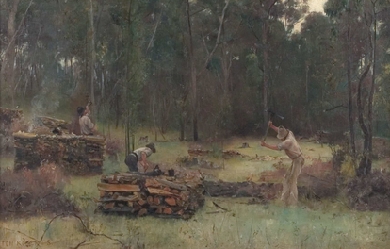
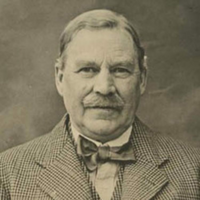
William Henry Ogilvie (21 August 1869– 30 January 1963) was a Scottish-Australian narrative poet and horseman. He was born near Kelso, Borders, Scotland and arrived in Australia in 1889, returning to Scotland after a decade. He had a deep love of horses and riding and he became interested in the outback. Before long he became an expert station hand, drover and horse breaker, working on such stations as Belalie on the Warrego, and Maaoupe near Penola in South Australia. He was a friend of Harry “Breaker” Morant and was described as a quiet-spoken Scot of medium height, with a fair moustache and red complexion.
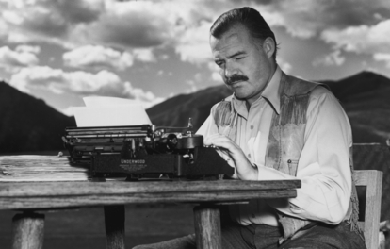

Ernest Hemingway (1899-1961) was one of the most significant American authors of the Twentieth century . His novels and short fictions have left an indelible mark on the literary production of the United States and the world. Although most often remembered for his economical and understated fiction, he was also a noted journalist. In 1954, Ernest Hemingway was awarded the Novel Prize in Literature. Hemingway is also known for his heroic, adventurous and often stereotypically “manly” public persona. The myth he cultivated of himself as a man of action aided the important Modernist reading of many of his works.
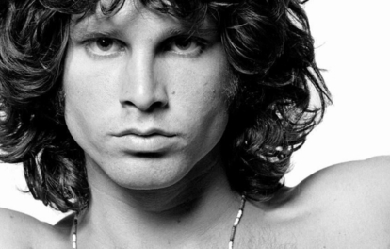
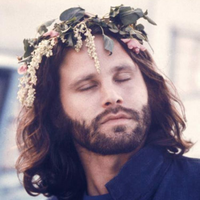
James Douglas “Jim” Morrison (December 8, 1943– July 3, 1971) was an American singer, songwriter, and poet, best remembered as the lead singer of The Doors. As a result of his lyrics, wild personality, performances, and the dramatic circumstances surrounding his life and death, Morrison is regarded by critics and fans as one of the most iconic and influential frontmen in rock music history. In the later part of the 20th century, his fame endured as one of the popular culture’s most rebellious and oft-displayed icons, representing the generation gap and youth counterculture. He was also well known for improvising spoken word poetry passages while the band played live. Morrison was ranked number 47 on Rolling Stone’s list of the "100 Greatest Singers of All Time", and number 22 on Classic Rock magazine’s "50 Greatest Singers In Rock". Ray Manzarek, who co-founded the Doors with him, said Morrison “embodied hippie counterculture rebellion”. Morrison was sometimes referred to by other nicknames, such as “Lizard King” and “King of Orgasmic Rock”. Morrison developed an alcohol dependency during the 1960s, which at times affected his performances on stage. He died at the age of 27 in Paris, possibly from an accidental heroin overdose. As no autopsy was performed, the exact cause of Morrison’s death is still disputed. Morrison is interred at Père Lachaise Cemetery in eastern Paris. Early years James Douglas Morrison was born in Melbourne, Florida, the son of Clara Virginia (née Clarke) and Rear Admiral George Stephen Morrison, USN, who commanded US naval forces during the Gulf of Tonkin incident, which provided the pretext for the US invasion of South Vietnam in 1965. Morrison had a sister, Anne Robin, who was born in 1947 in Albuquerque, New Mexico; and a brother, Andrew Lee Morrison, who was born in 1948 in Los Altos, California. His ancestors were Scottish, Irish, and English. In 1947, Morrison, then four years old, allegedly witnessed a car accident in the desert, in which a family of Native Americans were injured and possibly killed. He referred to this incident in the Doors’ song “Peace Frog” on the 1970 album Morrison Hotel, as well as in the spoken word performances “Dawn’s Highway” and “Ghost Song” on the posthumous 1978 album An American Prayer. Morrison believed this incident to be the most formative event of his life, and made repeated references to it in the imagery in his songs, poems, and interviews. His family does not recall this incident happening in the way he told it. According to the Morrison biography No One Here Gets Out Alive, Morrison’s family did drive past a car accident on an Indian reservation when he was a child, and he was very upset by it. The book The Doors, written by the remaining members of the Doors, explains how different Morrison’s account of the incident was from that of his father. This book quotes his father as saying, "We went by several Indians. It did make an impression on him [the young James]. He always thought about that crying Indian." This is contrasted sharply with Morrison’s tale of “Indians scattered all over the highway, bleeding to death.” In the same book, his sister is quoted as saying, “He enjoyed telling that story and exaggerating it. He said he saw a dead Indian by the side of the road, and I don’t even know if that’s true.” Raised a military brat, Morrison’s family moved often. He spent part of his childhood in San Diego. He completed third grade at a Fairfax County Elementary School Fairfax County, Virginia. His father was stationed at NAS Kingsville in 1952, he attended Charles H. Flato Elementary School in Kingsville, Texas. He continued at St. John’s Methodist School in Albuquerque, New Mexico, and then Longfellow School Sixth Grade Graduation Program from San Diego, California. In 1957, Morrison attended Alameda High School in Alameda, California. He graduated from George Washington High School, now George Washington Middle School, in Alexandria, Virginia in June 1961. Cass Elliot also attended high school there, that same year. Morrison read widely and voraciously—being particularly inspired by the writings of philosophers and poets. He was influenced by Friedrich Nietzsche, whose views on aesthetics, morality, and the Apollonian and Dionysian duality would appear in his conversation, poetry and songs. He read Plutarch’s “Lives of the Noble Greeks and Romans”. He read the works of the French Symbolist poet Arthur Rimbaud, whose style would later influence the form of Morrison’s short prose poems. He was also influenced by William S. Burroughs, Jack Kerouac, Allen Ginsberg, Lawrence Ferlinghetti, Charles Baudelaire, Molière, Franz Kafka, Honoré de Balzac and Jean Cocteau, along with most of the French existentialist philosophers. His senior-year English teacher said, “Jim read as much and probably more than any student in class, but everything he read was so offbeat I had another teacher (who was going to the Library of Congress) check to see if the books Jim was reporting on actually existed. I suspected he was making them up, as they were English books on sixteenth– and seventeenth-century demonology. I’d never heard of them, but they existed, and I’m convinced from the paper he wrote that he read them, and the Library of Congress would’ve been the only source.” Morrison went to live with his paternal grandparents in Clearwater, Florida, where he attended classes at St. Petersburg College (then known as a junior college). In 1962, he transferred to Florida State University (FSU) in Tallahassee, where he appeared in a school recruitment film. While attending FSU, Morrison was arrested for a prank following a home football game. In January 1964, Morrison moved to Los Angeles to attend the University of California, Los Angeles (UCLA). Shortly thereafter on August 2, 1964, Morrison’s father, George Stephen Morrison, commanded a carrier division of the United States fleet during the Gulf of Tonkin Incident, which resulted in the United States’ rapid escalation of the Vietnam War. At UCLA, Morrison enrolled in Jack Hirschman’s class on Antonin Artaud in the Comparative Literature program within the UCLA English Department. Artaud’s brand of surrealist theatre had a profound impact on Morrison’s dark poetic sensibility of cinematic theatricality. Morrison completed his undergraduate degree at UCLA’s film school within the Theater Arts department of the College of Fine Arts in 1965. At the time of graduation ceremony, he went to Venice, and his diploma was mailed to his mother at Coronado. He made several short films while attending UCLA. First Love, the first of these films, made with Morrison’s classmate and roommate Max Schwartz, was released to the public when it appeared in a documentary about the film Obscura. During these years, while living in Venice Beach, he became friends with writers at the Los Angeles Free Press, for which he advocated until his death in 1971. He conducted a lengthy and in-depth interview with Bob Chorush and Andy Kent, both working for the Free Press at the time (approximately December 6–8, 1970), and was planning on visiting the headquarters of the busy newspaper shortly before leaving for Paris. The Doors In the summer of 1965, after graduating with a bachelor’s degree from the UCLA film school, Morrison led a bohemian lifestyle in Venice Beach. Living on the rooftop of a building inhabited by his old UCLA cinematography friend, Dennis Jakobs, he wrote the lyrics of many of the early songs the Doors would later perform live and record on albums, the most notable being “Moonlight Drive” and “Hello, I Love You”. According to Jakobs, he lived on canned beans and LSD for several months. Morrison and fellow UCLA student, Ray Manzarek, were the first two members of the Doors, forming the group during that summer. They had met months earlier as cinematography students. The now-legendary story claims that Manzarek was lying on the beach at Venice one day, where he accidentally encountered Morrison. He was impressed with Morrison’s poetic lyrics, claiming that they were “rock group” material. Subsequently, guitarist Robby Krieger and drummer John Densmore joined. Krieger auditioned at Densmore’s recommendation and was then added to the lineup. All three musicians shared a common interest in the Maharishi Mahesh Yogi’s meditation practices at the time, attending scheduled classes, but Morrison was not involved in this series of classes, claiming later that he “did not meditate.” The Doors took their name from the title of Aldous Huxley’s book The Doors of Perception (a reference to the unlocking of doors of perception through psychedelic drug use). Huxley’s own title was a quotation from William Blake’s The Marriage of Heaven and Hell, in which Blake wrote: “If the doors of perception were cleansed everything would appear to man as it is, infinite.” Although Morrison was known as the lyricist of the group, Krieger also made significant lyrical contributions, writing or co-writing some of the group’s biggest hits, including “Light My Fire”, “Love Me Two Times”, “Love Her Madly”, and “Touch Me”. On the other hand, Morrison, who didn’t write most songs using an instrument, would come up with vocal melodies for his own lyrics, with the other band members contributing chords and rhythm. Morrison did not play an instrument live (except for maracas and tambourine for most shows, and harmonica on a few occasions) or in the studio (excluding maracas, tambourine, handclaps, and whistling). However, he did play the grand piano on “Orange County Suite” and a Moog synthesizer on “Strange Days”. In June 1966, Morrison and the Doors were the opening act at the Whisky a Go Go in the last week of the residency of Van Morrison’s band Them. Van’s influence on Jim’s developing stage performance was later noted by John Densmore in his book Riders On The Storm: “Jim Morrison learned quickly from his near-namesake’s stagecraft, his apparent recklessness, his air of subdued menace, the way he would improvise poetry to a rock beat, even his habit of crouching down by the bass drum during instrumental breaks.” On the final night, the two Morrisons and their two bands jammed together on “Gloria”. In November 1966, Morrison and the Doors produced a promotional film for “Break on Through (To the Other Side)”, which was their first single release. The film featured the four members of the group playing the song on a darkened set with alternating views and close-ups of the performers while Morrison lip-synched the lyrics. Morrison and the Doors continued to make short music films, including “The Unknown Soldier”, “Moonlight Drive”, and “People Are Strange”. The Doors achieved national recognition after signing with Elektra Records in 1967. The single “Light My Fire” spent three weeks at number one on the Billboard Hot 100 chart in July/August 1967. This was a far cry from the Doors playing warm up for Simon and Garfunkel and playing at a high school as they did in Connecticut that same year. Later, the Doors appeared on The Ed Sullivan Show, a popular Sunday night variety series that had introduced the Beatles and Elvis Presley to the United States. Ed Sullivan requested two songs from the Doors for the show, “People Are Strange” and “Light My Fire”. Sullivan’s censors insisted that the Doors change the lyrics of the song “Light My Fire” from “Girl we couldn’t get much higher” to “Girl we couldn’t get much better” for the television viewers; this was reportedly due to what was perceived as a reference to drugs in the original lyrics. After giving assurances of compliance to the producer in the dressing room, the band agreed, “we’re not changing a word,” and proceeded to sing the song with the original lyrics. Sullivan was not happy and he refused to shake hands with Morrison or any other band member after their performance. Sullivan had a show producer tell the band that they would never appear on The Ed Sullivan Show again. Morrison reportedly said to the producer, in a defiant tone, “Hey man. We just 'did’ the Sullivan Show!” By the release of their second album, Strange Days, the Doors had become one of the most popular rock bands in the United States. Their blend of blues and dark psychedelic rock included a number of original songs and distinctive cover versions, such as their rendition of “Alabama Song”, from Bertolt Brecht and Kurt Weill’s opera, Rise and Fall of the City of Mahagonny. The band also performed a number of extended concept works, including the songs “The End”, “When the Music’s Over”, and “Celebration of the Lizard”. In 1966, photographer Joel Brodsky took a series of black-and-white photos of Morrison, in a photo shoot known as “The Young Lion” photo session. These photographs are considered among the most iconic images of Jim Morrison and are frequently used as covers for compilation albums, books, and other memorabilia of the Doors and Morrison. In late 1967 at an infamous concert in New Haven, Connecticut, he was arrested on stage, an incident that further added to his mystique and emphasized his rebellious image. In 1968, the Doors released their third studio album, Waiting for the Sun. The band performed on July 5 at the Hollywood Bowl, this performance became famous with the DVD: Live at the Hollywood Bowl. It’s also this year that the band played, for the first time, in Europe. Their fourth album, The Soft Parade, was released in 1969. It was the first album where the individual band members were given credit on the inner sleeve for the songs they had written. Previously, each song on their albums had been credited simply to “the Doors”. On September 6 and 7, 1968, the Doors played four performances at the Roundhouse, London, England with Jefferson Airplane which were filmed by Granada for a television documentary The Doors are Open directed by John Sheppard. Around this time, Morrison—who had long been a heavy drinker—started showing up for recording sessions visibly inebriated. He was also frequently late for live performances. By early 1969, the formerly svelte singer had gained weight, grown a beard and mustache, and had begun dressing more casually—abandoning the leather pants and concho belts for slacks, jeans and T-shirts. During a concert of March 1, 1969 at the Dinner Key Auditorium in Miami, Morrison attempted to spark a riot in the audience. He failed, but a warrant for his arrest was issued by the Dade County Police department three days later for indecent exposure. Consequently, many of the Doors’ scheduled concerts were canceled. In September 1970, Morrison was convicted of indecent exposure and profanity. Morrison, who attended the sentencing “in a wool jacket adorned with Indian designs”, silently listened as he was sentenced for six months in prison and had to pay a $500 fine. Morrison remained free on a $50,000 bond. At the sentencing, Judge Murray Goodman told Morrison that he was a “person graced with a talent” admired by many of his peers. In 2007 Florida Governor Charlie Crist suggested the possibility of a posthumous pardon for Morrison, which was announced as successful on December 9, 2010. Drummer John Densmore denied Morrison ever exposed himself on stage that night. Following The Soft Parade, the Doors released Morrison Hotel. After a lengthy break the group reconvened in October 1970 to record what would become their final album with Morrison, titled L.A. Woman. Shortly after the recording sessions for the album began, producer Paul A. Rothchild—who had overseen all of their previous recordings—left the project. Engineer Bruce Botnick took over as producer. Poetry and film Morrison began writing in earnest during his adolescence. At UCLA he studied the related fields of theater, film, and cinematography. He self-published two separate volumes of his poetry in 1969, titled The Lords / Notes on Vision and The New Creatures. The Lords consists primarily of brief descriptions of places, people, events and Morrison’s thoughts on cinema. The New Creatures verses are more poetic in structure, feel and appearance. These two books were later combined into a single volume titled The Lords and The New Creatures. These were the only writings published during Morrison’s lifetime. Morrison befriended Beat poet Michael McClure, who wrote the afterword for Danny Sugerman’s biography of Morrison, No One Here Gets Out Alive. McClure and Morrison reportedly collaborated on a number of unmade film projects, including a film version of McClure’s infamous play The Beard, in which Morrison would have played Billy the Kid. After his death, a further two volumes of Morrison’s poetry were published. The contents of the books were selected and arranged by Morrison’s friend, photographer Frank Lisciandro, and girlfriend Pamela Courson’s parents, who owned the rights to his poetry. The Lost Writings of Jim Morrison Volume I is titled Wilderness, and, upon its release in 1988, became an instant New York Times Bestseller. Volume II, The American Night, released in 1990, was also a success. Morrison recorded his own poetry in a professional sound studio on two separate occasions. The first was in March 1969 in Los Angeles and the second was on December 8, 1970. The latter recording session was attended by Morrison’s personal friends and included a variety of sketch pieces. Some of the segments from the 1969 session were issued on the bootleg album The Lost Paris Tapes and were later used as part of the Doors’ An American Prayer album, released in 1978. The album reached No. 54 on the music charts. Some poetry recorded from the December 1970 session remains unreleased to this day and is in the possession of the Courson family. Morrison’s best-known but seldom seen cinematic endeavor is HWY: An American Pastoral, a project he started in 1969. Morrison financed the venture and formed his own production company in order to maintain complete control of the project. Paul Ferrara, Frank Lisciandro and Babe Hill assisted with the project. Morrison played the main character, a hitchhiker turned killer/car thief. Morrison asked his friend, composer/pianist Fred Myrow, to select the soundtrack for the film. Personal life Morrison’s family Morrison’s early life was the semi-nomadic existence typical of military families. Jerry Hopkins recorded Morrison’s brother, Andy, explaining that his parents had determined never to use physical corporal punishment such as spanking on their children. They instead instilled discipline and levied punishment by the military tradition known as dressing down. This consisted of yelling at and berating the children until they were reduced to tears and acknowledged their failings. Once Morrison graduated from UCLA, he broke off most contact with his family. By the time Morrison’s music ascended to the top of the charts (in 1967) he had not been in communication with his family for more than a year and falsely claimed that his parents and siblings were dead (or claiming, as it has been widely misreported, that he was an only child). This misinformation was published as part of the materials distributed with the Doors’ self-titled debut album. Admiral Morrison was not supportive of his son’s career choice in music. One day, an acquaintance brought over a record thought to have Jim on the cover. The record was the Doors’ self-titled debut. The young man played the record for Morrison’s father and family. Upon hearing the record, Morrison’s father wrote him a letter telling him “to give up any idea of singing or any connection with a music group because of what I consider to be a complete lack of talent in this direction.” In a letter to the Florida Probation and Parole Commission District Office dated October 2, 1970, Morrison’s father acknowledged the breakdown in family communications as the result of an argument over his assessment of his son’s musical talents. He said he could not blame his son for being reluctant to initiate contact and that he was proud of him nonetheless. Morrison spoke fondly of his Irish and Scottish ancestry and was inspired by Celtic mythology in his poetry and songs. Celtic Family Magazine revealed in their 2016 Spring Issue his Morrison clan was originally from the Isle of Lewis, Scotland, while his Irish side, the Clelland clan whom married into the Morrison line were from County Down, Ireland. Relationships Morrison’s first major love affair was with Mary Werbelow, whom he met on the beach in Florida. The relationship lasted several years inspiring many of the songs on the first two Doors albums including the 11-minute ballad “The End” which Ray Manzarek said was originally “a short goodbye love song to Mary” calling her “Jim’s first love”. Werbelow has remained out of view to rock historians with one exception, a 2005 interview in the St. Petersburg Times where she said Morrison spoke to her before a photo shoot for the Doors’ fourth album and told her the first three albums were about her. Morrison spent nearly the entirety of his adult life with a woman named Pamela Courson after meeting while both attended university. They met before he gained fame or fortune and she encouraged him to develop his poetry. At times, Courson used the surname “Morrison” with his apparent consent, or at least lack of concern. She was buried as Pamela Susan Morrison. After Courson’s death in 1974, and after her parents petitioned the court for inheritance of Morrison’s estate, the probate court in California decided that she and Morrison had once had what qualified as a common-law marriage, despite neither having applied for such status while they were living and common-law marriage not being recognized in California. Morrison’s will lists him as “an unmarried person” but listed Courson as the sole heir. They had previously obtained marriage licenses in Colorado in 1967 and in Los Angeles in 1968. The Doors’ keyboardist Ray Manzarek described Courson as Morrison’s “other half”. Morrison spoke to Courson through his lyrics and his poetry and dedicated his published poetry book The New Creatures to her. Songs like “Love Street”, “Queen of the Highway”, “Blue Sunday", and “Indian Summer” as well as many of his poems were said to be written about her. Morrison also reportedly regularly had sex with fans ("groupies") such as Pamela Des Barres and Josépha Karcz, who wrote a novel about their night together, and had numerous short flings with other musicians, as well as writers and photographers involved in the music business. They included Nico, the singer associated with the Velvet Underground, a one-night stand with singer Grace Slick of Jefferson Airplane, an on-again, off-again relationship with 16 Magazine’s Gloria Stavers as well as an alleged alcohol-fueled encounter with Janis Joplin. Nico also wanted to marry Morrison and they cut their thumbs in the desert with a knife and let their blood mingle. Nico said, “We exchanged blood. I carry his blood inside me.” David Crosby said many years later Morrison treated Joplin meanly at a party at the Calabasas, California, home of John Davidson while Davidson was out of town. She reportedly hit him over the head with a bottle of whiskey in retaliation during a fight in front of witnesses. In 1965, Judy Huddleston met Morrison and claimed she had a four-year on-and-off relationship with him that she chronicled in her book Love Him Madly: An Intimate Memoir of Jim Morrison and an out-of-print book called This is the End My Only Friend: Living & Dying with Jim Morrison, which was updated as Like He Was God. In 1970, Morrison participated in a Celtic Pagan handfasting ceremony with rock critic author Patricia Kennealy. The couple signed a document declaring themselves wed, but none of the necessary paperwork for a legal marriage was filed with the state. Kennealy discussed her experiences with Morrison in her autobiography Strange Days: My Life With and Without Jim Morrison. In an interview reported in the book Rock Wives, Kennealy reveals that she and Jim Morrison were wed, sort of, in a witch ceremony in 1970, but that he turned “really cold” when Kennealy became pregnant—maybe, she speculates, because he had "20 paternity suits pending against him." She was asked if Morrison took the ceremony seriously and she answered “probably not too seriously”. In July 1971, Janet Erwin documented in her journal having dated Morrison during the last few weeks before he traveled to Paris. She wrote the essay “Your Ballroom Days Are Over.” On a couple of their nights together there were strong aftershocks from the 1971 San Fernando earthquake; one aftershock measured 5.0 on the Richter magnitude scale. At the time of Morrison’s death there were at least three paternity actions pending against him, although no claims were made against his estate by any of the putative paternity claimants. One persistent claim of paternity came from Cliff Morrison. Pamela Des Barres later said in her autobiography I’m With The Band: Confessions of a Groupie that Morrison “turned out to be very much a one-woman man”, referring to his relationship with Pamela Courson. Death Morrison joined Courson in Paris in March 1971, at an apartment he had rented on the rue Beautreillis (in the 4th arrondissement of Paris on the Right Bank). In letters he described going for long walks through the city, alone. During this time, Morrison shaved his beard and lost some of the weight he had gained in the previous months. Morrison died on July 3, 1971 at age 27. In the official account of his death, he was found in a Paris apartment bathtub (at 17–19 rue Beautreillis, 4th arrondissement) by Courson. The official cause of death was listed as “heart failure”, although no autopsy was performed. The absence of an autopsy left many questions regarding the cause of Morrison’s death. In Wonderland Avenue, Danny Sugerman discussed his encounter with Courson after she returned to the United States. According to Sugerman’s account, Courson stated that Morrison had died of an accidental heroin overdose, having snorted what he believed to be cocaine. Sugerman added that Courson had given numerous contradictory versions of Morrison’s death, saying at times that she had killed Morrison, or that his death was her fault. Courson’s story of Morrison’s unintentional ingestion of heroin, resulting in an accidental overdose, is supported by the confession of Alain Ronay, who has written that Morrison died of a hemorrhage after snorting Courson’s heroin, and that Courson nodded off instead of phoning for medical help, leaving Morrison alone and bleeding to death. Ronay confessed in an article in Paris that he then helped cover up the circumstances of Morrison’s death, and that there was no autopsy– the normal procedure when a young person dies suddenly– due to the medical examiner being bribed. In the epilogue of No One Here Gets Out Alive, Hopkins and Sugerman write that Ronay and Agnès Varda say Courson lied to the police who responded to the death scene, and later in her deposition, telling them Morrison never took drugs. She also claimed that she was Morrison’s cousin. In the epilogue to No One Here Gets Out Alive, Hopkins says that 20 years after Morrison’s death, Ronay and Varda broke their silence and gave this account “they arrived at the house shortly after Morrison’s death and Courson said that she and Morrison had taken heroin after a night of drinking. Morrison had been coughing badly, had gone to take a bath, and vomited blood.” Courson said that he appeared to recover and that she then went to sleep. When she awoke sometime later Morrison was unresponsive, so she called local friends. Hopkins and Sugerman also claim that Morrison had asthma and was suffering from a respiratory condition involving a chronic cough and vomiting blood on the night of his death. This theory is partially supported in The Doors (written by the remaining members of the band) in which they claim Morrison had been coughing up blood for nearly two months in Paris, but none of the members of the Doors were in Paris with Morrison in the months prior to his death. No other friends have reported witnessing Morrison coughing. According to a Madame Colinette, who was at Père Lachaise Cemetery mourning the recent loss of her husband, she witnessed Morrison’s funeral. The ceremony was “pitiful,” with several of the attendants muttering a few words, throwing a few flowers over the casket, then leaving quickly and hastily within minutes as if their lives depended upon it. Those who attended included Alain Ronay, Agnès Varda, Bill Siddons (manager), Courson, and Robin Wertle (Morrison’s Canadian private secretary at the time for a few months). In the first version of No One Here Gets Out Alive, published in 1980, Sugerman and Hopkins gave some credence to the rumor that Morrison may not have died at all, calling the fake death theory “not as far-fetched as it might seem”. This theory led to considerable distress for Morrison’s loved ones over the years, notably when fans would stalk them, searching for evidence of Morrison’s whereabouts. No proof of any kind has ever been offered to substantiate Sugerman’s suggestion that Morrison was still alive. In 1995, a new epilogue was added to Sugerman’s and Hopkins’s book, giving new facts about Morrison’s death and discounting the fake death theory saying “As time passed, some of Jim and Pamela [Courson]'s friends began to talk about what they knew, and although everything they said pointed irrefutably to Jim’s demise, there remained and probably always will be those who refuse to believe that Jim is dead and those who will not allow him to rest in peace.” In 2007, Sam Bernett, a former manager of the Rock 'n’ Roll Circus nightclub, released a (French) book titled “The End: Jim Morrison”, alleging that Morrison overdosed on heroin in his nightclub. He claims that Morrison went to the club to buy heroin for Courson, used some himself and died in the bathroom, and that his body was then moved by Patrick Chauvel, who corroborates the move, along with two unidentified drug dealers, nicknamed ‘Le Chinois’ and ‘Le Petit Robert’ out the back of the Nightclub so as to prevent a scandal and then bundled into a taxi with the two dealers, which then drove to Morrison’s rue Beautrellis apartment. Apart from Chauvel, one of the other patrons at the club who state that they helped move Morrison was interviewed in the documentary Rock Poet: Jim Morrison (2010). According to Bernett, the heroin was ultimately supplied by the aristocrat Jean de Breiteuil. In 2014, Marianne Faithfull claimed that her boyfriend, de Breiteuil, received a late-night phone call and he alone rushed over to Morrison’s apartment on the day of his death. Near the end of an 1986 audio interview, with radio host Roger Steffens and Doors drummer John Densmore. Steffens recounts that he had been told two days after Morrison’s death, by a shaking Marianne Faithfull and her lover Jean de Breiteuil in Marrakesh of the details of Morrison’s demise, with both Faithfull and Breiteuil having been in Morrison’s apartment after his return from the nightclub and seeing him dead in the bathroom, a scene which motivated them to quickly flee the country, flying to Tangier the next day and then on to Marrakesh, where Steffens happened to be living in 1971. Faithfull would consistently decline to comment on this thereafter until 2014. Steffens remarked that he found it amazing how Faithfull had never publicly discussed the tragedy from 1971 up to the time of recording, 1986. As early as the 1990s, Cameron Watson, an American working as a DJ in Paris at that time, would give the account that while working in the Parisian nightclub La Bulle in July 1971, two “well dressed” drug dealers arrived in the early morning hours at the club and told him that Jim Morrison had just died, Watson then announced this to the few remaining patrons at the club, the first public announcement of his demise and which contributed to the growth of the local parisian rumors. Paris Journal After his death, a notebook of poetry written by Morrison was recovered entitled Paris Journal which amongst other personal details, contains the allegorical foretelling of a man who will be left grieving and having to abandon his belongings, due to a police investigation into a death connected to the Chinese opium trade. Weeping, he left his pad on orders from police & furnishings hauled away, all records & momentos, & reporters calculating tears & curses for the press: “I hope the Chinese junkies get you” & they will for the [opium] poppy rules the world. The concluding stanzas of this poem end with conveying a disappointment for someone who he had an intimate relationship with and a further invocation of Billy/the killer Hitchhiker, a common character in Morrison’s body of work. This is my poem for you, Great flowing funky flower’d beast, Great perfumed wreck of hell... Someone new in your knickers & who would that be? You know, You know more, than you let on... Tell them you came & saw & look’d into my eyes & saw the shadow of the guard receding, Thoughts in time & out of season The Hitchiker stood by the side of the road & levelled his thumb in the calm calculus of reason. In 2013 another of Morrison’s notebooks from Paris, found alongside the Paris Journal in the same box, known as the 127 Fascination box, sold for $250,000. at auction. This box of personal belongings similarly contained a home movie of Pamela Courson, the only film so far recovered, to be shot by Morrison. The box also housed a number of older notebooks and journals and may have potentially included the “Steno Pad” and falsely titled “The Lost Paris Tapes” if they had not been separated from the primary collection and sold by Philippe Dalecky with this promotional title. This tape was later determined by avid listeners to be largely of Jomo & The Smoothies recordings of Morrison, friends and producer Paul Rothchild loose jamming in Los Angeles well before 1971. Grave site Morrison was buried in Père Lachaise Cemetery in Paris, one of the city’s most visited tourist attractions. The grave had no official marker until French officials placed a shield over it, which was stolen in 1973. The grave was listed in the cemetery directory with Morrison’s name incorrectly rearranged as “Douglas James Morrison.” In 1981, Croatian sculptor Mladen Mikulin voluntarily placed a bust of his own design and a new gravestone with Morrison’s name at the grave to commemorate the 10th anniversary of his death; the bust was defaced through the years by cemetery vandals and later stolen in 1988. Mikulin made another bust of Morrison in 1989, and a bronze portrait of him in 2001; neither piece is at the gravesite. In the early 1990s, Morrison’s father, George Stephen Morrison, after consulting with E. Nicholas Genovese, professor of classics and humanities, San Diego State University, placed a flat stone on the grave. The bronze plaque thereon bears the Greek inscription: ΚΑΤΑ ΤΟΝ ΔΑΙΜΟΝΑ ΕΑΥΤΟΥ, literally meaning “according to his own daemon, i.e., guiding spirit,” to convey the sentiment “True to Himself.” Artistic influences As a naval family the Morrisons relocated frequently. Consequently, Morrison’s early education was routinely disrupted as he moved from school to school. Nonetheless he was drawn to the study of literature, poetry, religion, philosophy and psychology, among other fields. Biographers have consistently pointed to a number of writers and philosophers who influenced Morrison’s thinking and, perhaps, his behavior. While still in his teens Morrison discovered the work of philosopher Friedrich Nietzsche. He was also drawn to the poetry of William Blake, Charles Baudelaire and Arthur Rimbaud. Beat Generation writers such as Jack Kerouac also had a strong influence on Morrison’s outlook and manner of expression; Morrison was eager to experience the life described in Kerouac’s On the Road. He was similarly drawn to the work of French writer Louis-Ferdinand Céline. Céline’s book, Voyage au Bout de la Nuit (Journey to the End of the Night) and Blake’s Auguries of Innocence both echo through one of Morrison’s early songs, “End of the Night”. Morrison later met and befriended Michael McClure, a well known beat poet. McClure had enjoyed Morrison’s lyrics but was even more impressed by his poetry and encouraged him to further develop his craft. Morrison’s vision of performance was colored by the works of 20th-century French playwright Antonin Artaud (author of Theater and its Double) and by Julian Beck’s Living Theater. Other works relating to religion, mysticism, ancient myth and symbolism were of lasting interest, particularly Joseph Campbell’s The Hero with a Thousand Faces. James Frazer’s The Golden Bough also became a source of inspiration and is reflected in the title and lyrics of the song “Not to Touch the Earth”. Morrison was particularly attracted to the myths and religions of Native American cultures. While he was still in school, his family moved to New Mexico where he got to see some of the places and artifacts important to the American Southwest Indigenous cultures. These interests appear to be the source of many references to creatures and places such as lizards, snakes, deserts and “ancient lakes” that appear in his songs and poetry. His interpretation and imagination of the practices of Native American ceremonial people (which, based on his readings, he referred to by the anthropological but inaccurate term “shamans”) influenced his stage routine, notably in seeking trance states and vision through dancing to the point of exhaustion. In particular, Morrison’s poem “The Ghost Song” was inspired by his readings about the Native American Ghost Dance. Jim Morrison’s vocal influences included Elvis Presley and Frank Sinatra, which is evident in his own baritone crooning style used in several of the Doors’ songs and in the 1981 documentary The Doors: A Tribute to Jim Morrison, producer Paul Rothchild refers his first impression of Morrison as being a “Rock and Roll Bing Crosby”. It is mentioned within the pages of No One Here Gets Out Alive by Danny Sugerman, that Morrison as a teenager was such a fan of Presley’s music that he demanded people be quiet when Elvis was on the radio. The Frank Sinatra influence is mentioned in the pages of The Doors, The Illustrated History also by Sugerman, where Frank Sinatra is listed on Morrison’s Band Bio as being his favorite singer. Reference to this can also be found in a Rolling Stone article about Jim Morrison, regarding the Top 100 rock singers of all time. Legacy Musical Morrison was, and continues to be, one of the most popular and influential singer-songwriters and iconic front men in rock history. To this day Morrison is widely regarded as the prototypical rock-star: surly, sexy, scandalous, and mysterious. The leather pants he was fond of wearing both onstage and off have since become stereotyped as rock-star apparel. In 2011, a Rolling Stone readers’ pick placed Jim Morrison in fifth place of the magazine’s “Best Lead Singers of All Time”. Iggy and the Stooges are said to have formed after lead singer Iggy Pop was inspired by Morrison while attending a Doors concert in Ann Arbor, Michigan. One of Pop’s most popular songs, “The Passenger”, is said to be based on one of Morrison’s poems. After Morrison’s death, Pop was considered as a replacement lead singer for the Doors; the surviving Doors gave him some of Morrison’s belongings and hired him as a vocalist for a series of shows. Wallace Fowlie, professor emeritus of French literature at Duke University, wrote Rimbaud and Jim Morrison, subtitled “The Rebel as Poet– A Memoir”. In this he recounts his surprise at receiving a fan letter from Morrison who, in 1968, thanked him for his latest translation of Arthur Rimbaud’s verse into English. “I don’t read French easily”, he wrote, “...your book travels around with me.” Fowlie went on to give lectures on numerous campuses comparing the lives, philosophies and poetry of Morrison and Rimbaud. The book The Doors by the remaining Doors quotes Morrison’s close friend Frank Lisciandro as saying that too many people took a remark of Morrison’s that he was interested in revolt, disorder, and chaos “to mean that he was an anarchist, a revolutionary, or, worse yet, a nihilist. Hardly anyone noticed that Jim was paraphrasing Rimbaud and the Surrealist poets.” Layne Staley, the vocalist of Alice in Chains, Eddie Vedder, the vocalist of Pearl Jam, Scott Weiland, the vocalist of Stone Temple Pilots and Velvet Revolver, Julian Casablancas of the Strokes, James LaBrie of Dream Theater, as well as Scott Stapp of Creed and Ville Valo of H.I.M., have all said that Morrison was their biggest influence and inspiration. Stone Temple Pilots and Velvet Revolver have both covered “Roadhouse Blues” by the Doors. Weiland also filled in for Morrison to perform “Break On Through (To The Other Side)” with the rest of the Doors. Stapp filled in for Morrison for “Light My Fire”, “Riders on the Storm” and “Roadhouse Blues” on VH1 Storytellers. Creed performed their version of “Roadhouse Blues” with Robby Krieger for the 1999 Woodstock Festival. Morrison’s recital of his poem “Bird Of Prey” can be heard throughout the song “Sunset” by Fatboy Slim. Rock band Bon Jovi featured Morrison’s grave in their “I’ll Sleep When I’m Dead” video clip. The band Radiohead mentions Jim Morrison in their song “Anyone Can Play Guitar”, stating “I wanna be wanna be wanna be Jim Morrison”. Alice Cooper in the liner notes of the album Killer stated that the song “Desperado” is about Jim Morrison. The leather pants of U2's Bono’s “The Fly” persona for the Achtung Baby era and subsequent Zoo TV Tour is attributed to Jim Morrison. On their 2008 album The Hawk Is Howling In 2012 electronic music producer Skrillex released “Breakn’ a Sweat” which contained vocals from an interview with Jim Morrison. In popular culture In June 2013, a new fossil analysis revealed a lizard, one of the largest ever known that lived on Myanmar, was given the moniker Barbaturex morrisoni in honor of Morrison. “This is a king lizard, and he was the lizard king, so it just fit,” said Jason Head, a paleontologist at the University of Nebraska-Lincoln. The animated television show The Simpsons has made numerous references to Morrison, including Krusty the Klown singing Break On Through ("I Love Lisa", Season 4); Otto Mann telling Homer that “me and the admiral do not get along” (a reference to Morrison and his estranged father, Rear Admiral George Stephen Morrison ("The Otto Show", Season 3)); mention of Morrison’s grave ("The Devil Wears Nada", Season 21). Another reference, “I am the lizard queen!” Is bellowed by Lisa Simpson at the end of her encounter with psychedelic theme-ride river water at Duff Gardens ("Selma’s Choice", Season 4). In another episode, Morrison himself was visually depicted in the form of a hallucination had by Homer Simpson when he was forming a rock band ("Covercraft", Season 26) In Stephen King’s The Stand, Stu Redman tells a friend about his encounter with Jim Morrison long after Morrison’s supposed death, late at night at a lonely Texas gas station in the 1980s. Discography Books By Morrison * The Lords and the New Creatures (1969). 1985 edition: ISBN 0-7119-0552-5 * An American Prayer (1970) privately printed by Western Lithographers. (Unauthorized edition also published in 1983, Zeppelin Publishing Company, ISBN 0-915628-46-5. The authenticity of the unauthorized edition has been disputed.) * Arden lointain, edition bilingue (1988), trad. de l’américain et présenté par Sabine Prudent et Werner Reimann. [Paris]: C. Bourgois. 157 p. N.B.: Original texts in English, with French translations, on facing pages. ISBN 2-267-00560-3 * Wilderness: The Lost Writings Of Jim Morrison (1988). 1990 edition: ISBN 0-14-011910-8 * The American Night: The Writings of Jim Morrison (1990). 1991 edition: ISBN 0-670-83772-5 About Morrison * Linda Ashcroft, Wild Child: Life with Jim Morrison, (1997) ISBN 1-56025-249-9 * Lester Bangs, “Jim Morrison: Bozo Dionysus a Decade Later” in Main Lines, Blood Feasts, and Bad Taste: A Lester Bangs Reader, John Morthland, ed. Anchor Press (2003) ISBN 0-375-71367-0 * Stephen Davis, Jim Morrison: Life, Death, Legend, (2004) ISBN 1-59240-064-7 * John Densmore, Riders on the Storm: My Life With Jim Morrison and the Doors (1991) ISBN 0-385-30447-1 * Dave DiMartino, Moonlight Drive (1995) ISBN 1-886894-21-3 * Steven Erkel, "The Poet Behind the Doors: Jim Morrison’s Poetry and the 1960s Countercultural Movement" (2011) * Wallace Fowlie, Rimbaud and Jim Morrison (1994) ISBN 0-8223-1442-8 * Jerry Hopkins, The Lizard King: The Essential Jim Morrison (1995) ISBN 0-684-81866-3 * Jerry Hopkins and Danny Sugerman, No One Here Gets Out Alive (1980) ISBN 0-85965-138-X * Mike Jahn, “Jim Morrison and the Doors” (1969)Library of Congress Catalog Card Number 71-84745 * Dylan Jones, Jim Morrison: Dark Star, (1990) ISBN 0-7475-0951-4 * Patricia Kennealy, Strange Days: My Life With and Without Jim Morrison (1992) ISBN 0-525-93419-7 * Gerry Kirstein, “Some Are Born to Endless Night: Jim Morrison, Visions of Apocalypse and Transcendence” (2012) ISBN 1451558066 * Frank Lisciandro, Morrison: A Feast of Friends (1991) ISBN 0-446-39276-6, Morrison—Un festin entre amis (1996) (French) * Frank Lisciandro, Jim Morrison: An Hour For Magic (A Photojournal) (1982) ISBN 0-85965-246-7, James Douglas Morrison (2005) (French) * Ray Manzarek, Light My Fire (1998) ISBN 0-446-60228-0. First by Jerry Hopkins and Danny Sugerman (1981) * Peter Jan Margry, The Pilgrimage to Jim Morrison’s Grave at Père Lachaise Cemetery: The Social Construction of Sacred Space. In idem (ed.), Shrines and Pilgrimage in the Modern World. New Itineraries into the Sacred. Amsterdam University Press, 2008, p. 145–173. * Thanasis Michos, The Poetry of James Douglas Morrison (2001) ISBN 960-7748-23-9 (Greek) * Daveth Milton, We Want The World: Jim Morrison, The Living Theatre, and the FBI, (2012) ISBN 978-0957051188 * Mark Opsasnick, The Lizard King Was Here: The Life and Times of Jim Morrison in Alexandria, Virginia (2006) ISBN 1-4257-1330-0 * James Riordan & Jerry Prochnicky, Break on through: The Life and Death of Jim Morrison (1991) ISBN 0-688-11915-8 * Adriana Rubio, Jim Morrison: Ceremony... Exploring the Shaman Possession (2005) ISBN * Howard Sounes. 27: A History of the 27 Club Through the Lives of Brian Jones, Jimi Hendrix, Janis Joplin, Jim Morrison, Kurt Cobain, and Amy Winehouse, Boston: Da Capo Press, 2013. ISBN 0-306-82168-0. * The Doors (remaining members Ray Manzarek, Robby Krieger, John Densmore) with Ben Fong-Torres, The Doors (2006) ISBN 1-4013-0303-X * Mick Wall, “Love Becomes a Funeral Pyre: A Biography of the Doors”, (2014) Films Films by Morrison * HWY: An American Pastoral Documentaries featuring Morrison Films about The Doors * The Doors (1991), A film by director Oliver Stone, starring Val Kilmer as Morrison and with cameos by Krieger and Densmore. Kilmer’s performance was praised by some critics. Ray Manzarek, The Doors’ keyboardist, harshly criticized Stone’s portrayal of Morrison, and noted that numerous events depicted in the movie were pure fiction. David Crosby on an album by CPR wrote and recorded a song about the movie with the lyric: “And I have seen that movie– and it wasn’t like that.” References Wikipedia—https://en.wikipedia.org/wiki/Jim_Morrison

Hey! I went through a stage where poetry was an everyday thing for me and I thought I may as well share it instead of filling my book with it.... I don't write as often anymore but would love to start it up again and need some inspiration. I'm a fantasy writer, those of you who have read my poetry so far may notice a lot of it is more horror wirting then nice poetry.. I was in a dark place when I started writing and it helped to express my feelings on paper instead of taking it out on others and dragging myself down, it helped me get through that tough time and back onto my feet so I really do LOVE poetry :) Majority of my poetry is made up, for example, I have never been to the snow.... But I enjoy the fantasy of it of writing whatever you like. The rest of my poems though, are real and based on real life events and I will more than likely note that on my poems. Thank you for taking the time to read this through, enjoy my poetry and feedback is appreciated! :) Cheeers mate!
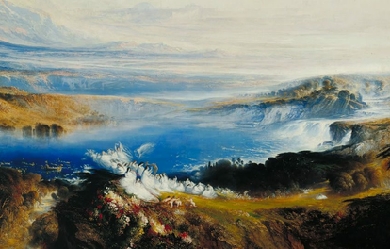
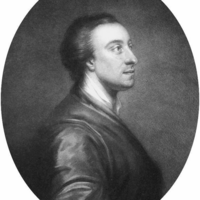
Mark Akenside (9 November 1721– 23 June 1770) was an English poet and physician. Biography Akenside was born at Newcastle upon Tyne, England, the son of a butcher. He was slightly lame all his life from a wound he received as a child from his father’s cleaver. All his relations were Dissenters, and, after attending the Royal Free Grammar School of Newcastle, and a dissenting academy in the town, he was sent in 1739 to the University of Edinburgh to study theology with a view to becoming a minister, his expenses being paid from a special fund set aside by the dissenting community for the education of their pastors. He had already contributed The Virtuoso, in imitation of Spenser’s style and stanza (1737) to the Gentleman’s Magazine, and in 1738 A British Philippic, occasioned by the Insults of the Spaniards, and the present Preparations for War (also published separately). After one winter as a theology student, Akenside changed to medicine as his field of study. He repaid the money that had been advanced for his theological studies, and became a deist. His politics, said Dr. Samuel Johnson, were characterized by an “impetuous eagerness to subvert and confound, with very little care what shall be established,” and he is caricatured in the republican doctor of Tobias Smollett’s The Adventures of Peregrine Pickle. He was elected a member of the Medical Society of Edinburgh in 1740. His ambitions already lay outside his profession, and his gifts as a speaker made him hope one day to enter Parliament. In 1740, he printed his Ode on the Winter Solstice in a small volume of poems. In 1741, he left Edinburgh for Newcastle and began to call himself surgeon, though it is doubtful whether he practised, and from the next year dates his lifelong friendship with Jeremiah Dyson (1722–1776). During a visit to Morpeth in 1738, Akenside had the idea for his didactic poem, The Pleasures of the Imagination, which was well received and later desecribed as 'of great beauty in its richness of description and language’, and was also subsequently translated into more than one foreign language. He had already acquired a considerable literary reputation when he came to London about the end of 1743 and offered the work to Robert Dodsley for £120. Dodsley thought the price exorbitant, and only accepted the terms after submitting the manuscript to Alexander Pope, who assured him that this was “no everyday writer”. The three books of this poem appeared in January 1744. His aim, Akenside tells us in the preface, was “not so much to give formal precepts, or enter into the way of direct argumentation, as, by exhibiting the most engaging prospects of nature, to enlarge and harmonize the imagination, and by that means insensibly dispose the minds of men to a similar taste and habit of thinking in religion, morals and civil life”. His powers fell short of this ambition; his imagination was not brilliant enough to surmount the difficulties inherent in a poem dealing so largely with abstractions; but the work was well received. Thomas Gray wrote to Thomas Warton that it was “above the middling”, but “often obscure and unintelligible and too much infected with the Hutchinson jargon”. William Warburton took offence at a note added by Akenside to the passage in the third book dealing with ridicule. Accordingly he attacked the author of the Pleasures of the Imagination—which was published anonymously—in a scathing preface to his Remarks on Several Occasional Reflections, in answer to Dr Middleton... (1744). This was answered, nominally by Dyson, in An Epistle to the Rev. Mr Warburton, in which Akenside probably had a hand. It was in the press when he left England in 1744 to secure a medical degree at Leiden. In little more than a month he had completed the necessary dissertation, De ortu et incremento foetus humani, and received his diploma. Returning to England Akenside unsuccessfully attempted to establish a practice in Northampton. In 1744, he published his Epistle to Curio, attacking William Pulteney (afterwards Earl of Bath) for having abandoned his liberal principles to become a supporter of the government, and in the next year he produced a small volume of Odes on Several Subjects, in the preface to which he lays claim to correctness and a careful study of the best models. His friend Dyson had meanwhile left the bar, and had become, by purchase, clerk to the House of Commons. Akenside had come to London and was trying to make a practice at Hampstead. Dyson took a house there, and did all he could to further his friend’s interest in the neighbourhood. But Akenside’s arrogance and pedantry frustrated these efforts, and Dyson then took a house for him in Bloomsbury Square, making him independent of his profession by an allowance stated to have been £300 a year, but probably greater, for it is asserted that this income enabled him to “keep a chariot”, and to live “incomparably well”. In 1746 he wrote his much-praised “Hymn to the Naiads”, and he also became a contributor to Dodsley’s Museum, or Literary and Historical Register. He was now twenty-five years old, and began to devote himself almost exclusively to his profession. He was elected a Fellow of the Royal Society in 1753. He was an acute and learned physician. He was admitted M.D. at the University of Cambridge in 1753, fellow of the Royal College of Physicians in 1754, and fourth censor in 1755. In June 1755 he read the Gulstonian lectures before the College, in September 1756 the Croonian Lectures, and in 1759 the Harveian Oration. In January 1759 he was appointed assistant physician, and two months later principal physician to Christ’s Hospital, but he was charged with harsh treatment of the poorer patients, and his unsympathetic character prevented the success to which his undeniable learning and ability entitled him. At the accession of George III both Dyson and Akenside changed their political opinions, and Akenside’s conversion to Tory principles was rewarded by the appointment of physician to the queen. Dyson became secretary to the treasury, lord of the treasury, and in 1774 privy councillor and cofferer to the household. Akenside died at his house in Burlington Street, where he had lived from 1762. His friendship with Dyson puts his character in the most amiable light. Writing to his friend so early as 1744, Akenside said that the intimacy had “the force of an additional conscience, of a new principle of religion”, and there seems to have been no break in their affection. He left all his effects and his literary remains to Dyson, who issued an edition of his poems in 1772. This included the revised version of the Pleasures of Imagination, on which the author was engaged at his death. Akenside’s verse was better when it was subjected to more severe metrical rules. His odes are rarely lyrical in the strict sense, but they are dignified and often musical. By 1911 his works were little read. Edmund Gosse described him as “a sort of frozen Keats”. Works * The best edition of Akenside’s Poetical Works is that prepared (1834) by Alexander Dyce for the Aldine Edition of the British Poets, and reprinted with small additions in subsequent issues of the series. See Dyce’s Life of Akenside prefixed to his edition, also Johnson’s Lives of the Poets, and the Life, Writings and Genius of Akenside (1832) by Charles Bucke. * The authoritative edition of Akenside’s Poetical Works is that prepared by Robin Dix (1996). An important earlier edition was prepared by Alexander Dyce (1834) for the Aldine Edition of the British Poets, and reprinted with small additions in subsequent issues of the series. See Dyce’s Life of Akenside prefixed to his edition, also Johnson’s Lives of the Poets, and the Life, Writings and Genius of Akenside (1832) by Charles Bucke. References and sources * References * Sources * This article incorporates text from a publication now in the public domain: Chisholm, Hugh, ed. (1911). “Akenside, Mark”. Encyclopædia Britannica (11th ed.). Cambridge University Press. Editnotes: External links * Works by Mark Akenside at Project Gutenberg * Works by or about Mark Akenside at Internet Archive * Works by Mark Akenside at LibriVox (public domain audiobooks) * Index entry for Mark Akenside at Poets’ Corner * Akenside’s The pleasures of imagination: a poem, in three books, New York, 1795. * Mark Akenside at University of Toronto Libraries References Wikipedia—https://en.wikipedia.org/wiki/Mark_Akenside
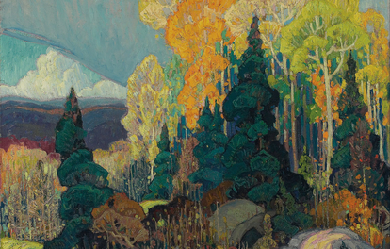
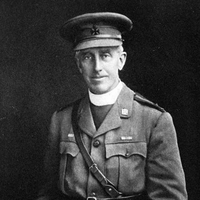
Frederick George Scott (7 April 1861– 19 January 1944) was a Canadian poet and author, known as the Poet of the Laurentians. He is sometimes associated with Canada’s Confederation Poets, a group that included Charles G.D. Roberts, Bliss Carman, Archibald Lampman, and Duncan Campbell Scott. Scott published 13 books of Christian and patriotic poetry. Scott was a British imperialist who wrote many hymns to the British Empire—eulogizing his country’s roles in the Boer Wars and World War I. Many of his poems use the natural world symbolically to convey deeper spiritual meaning. Frederick George Scott was the father of poet F. R. Scott.


